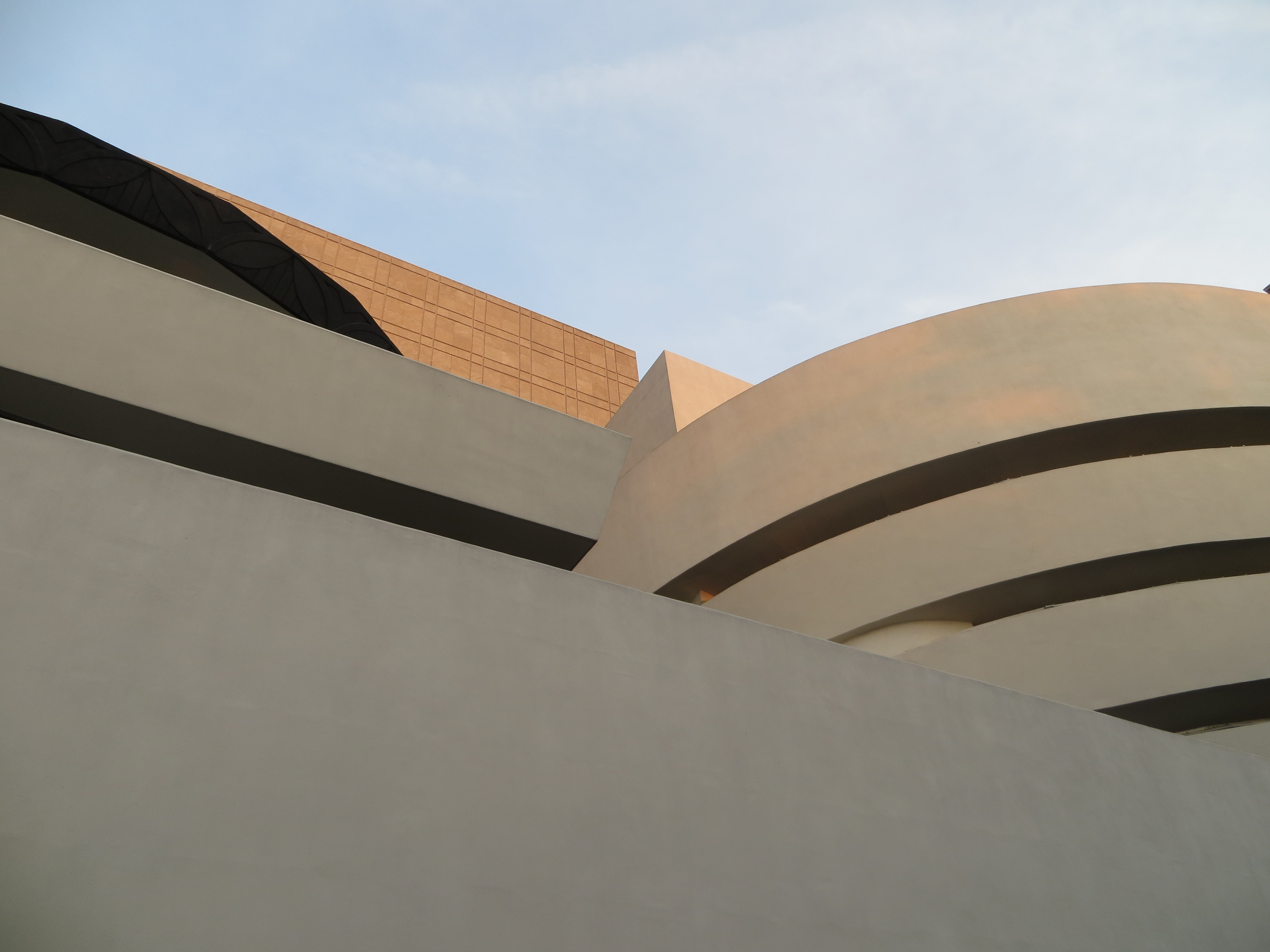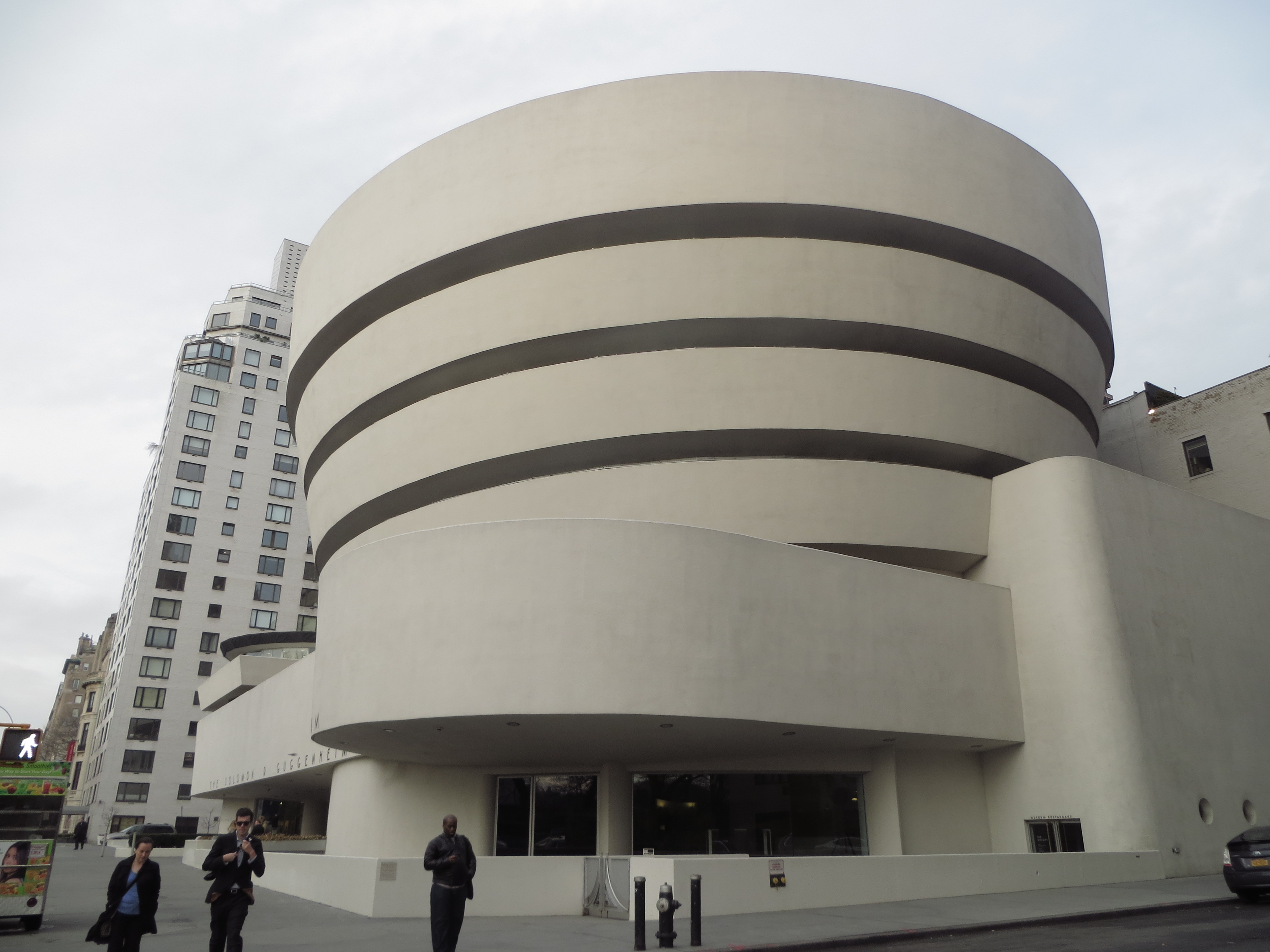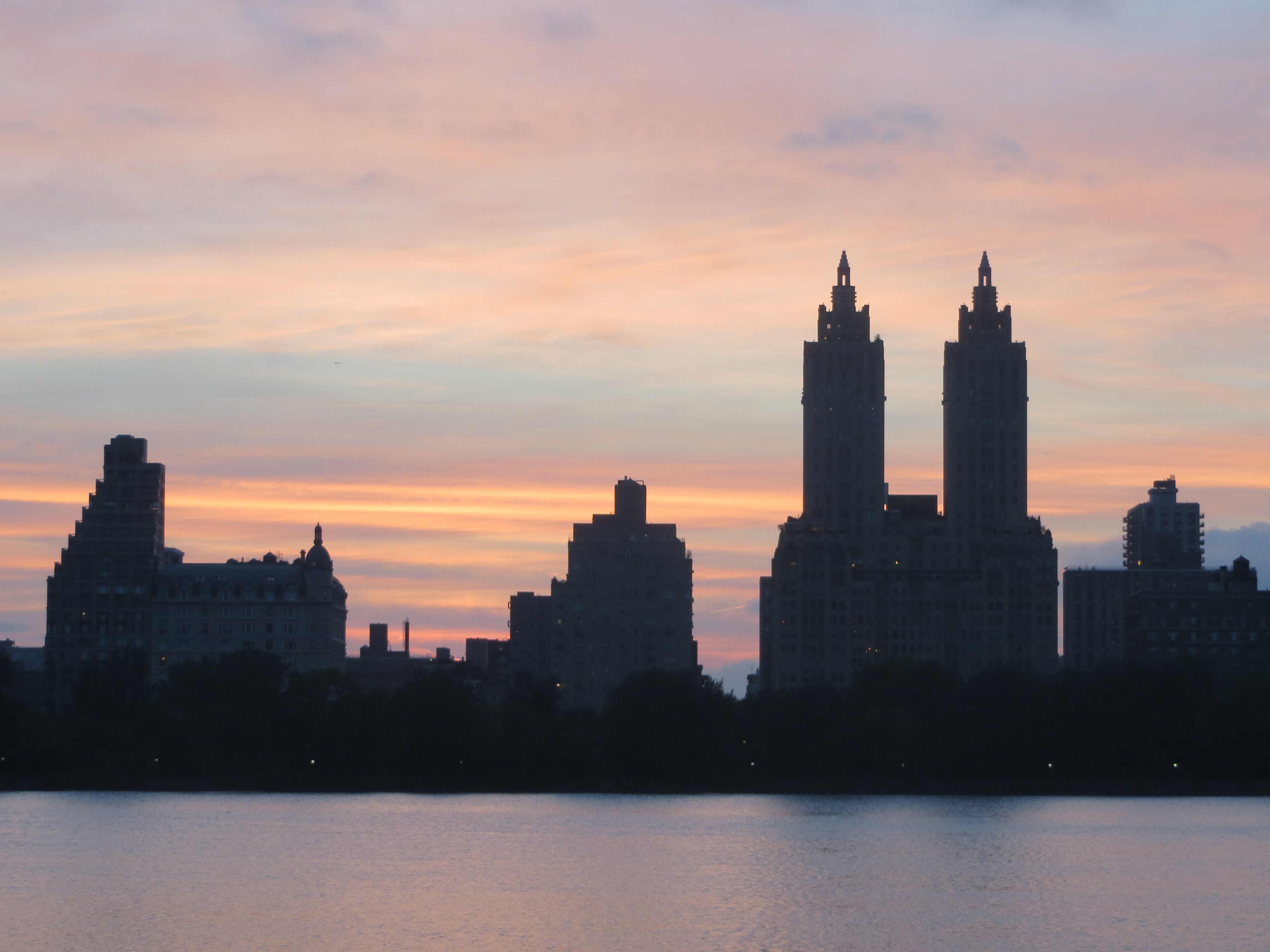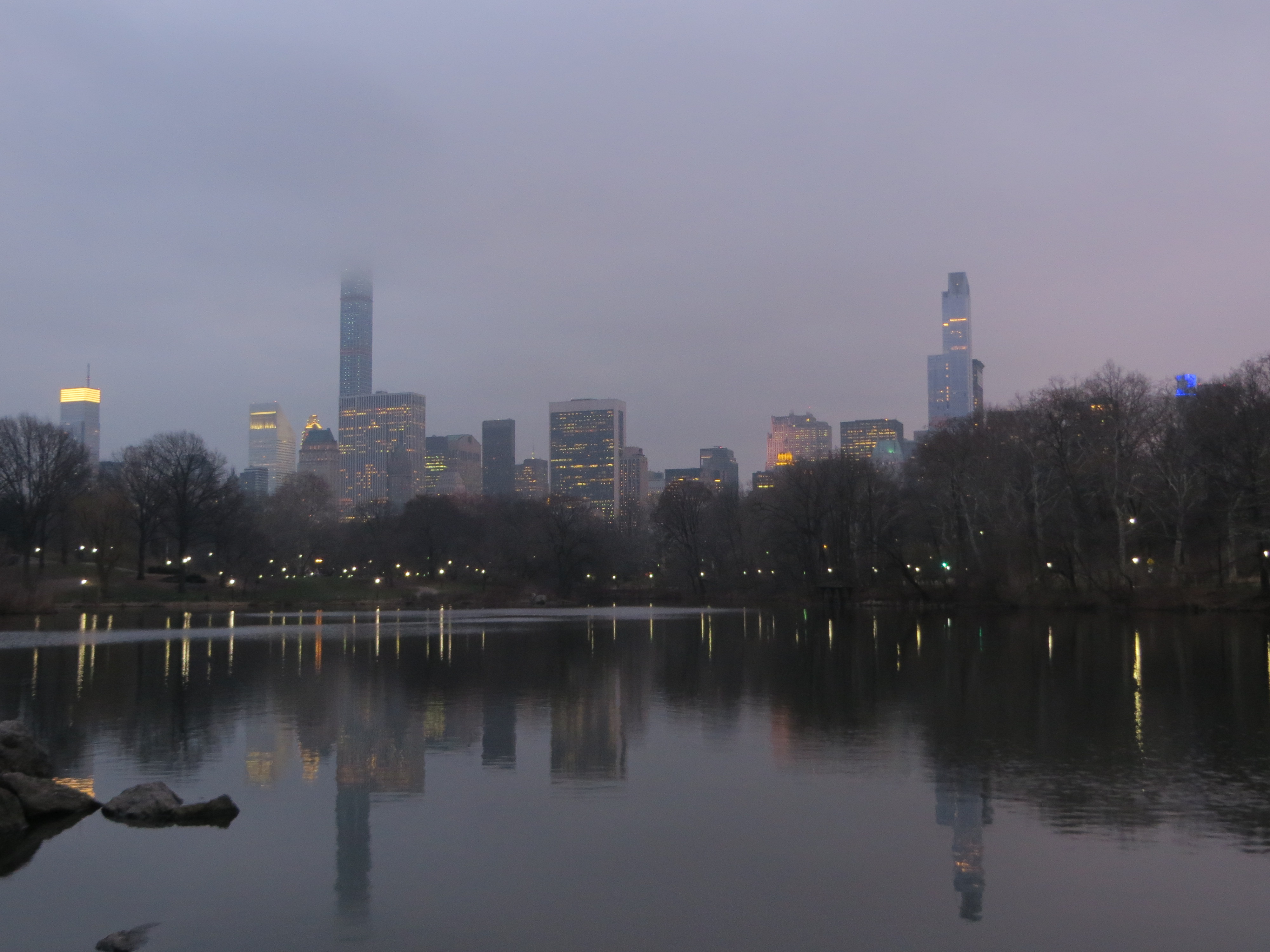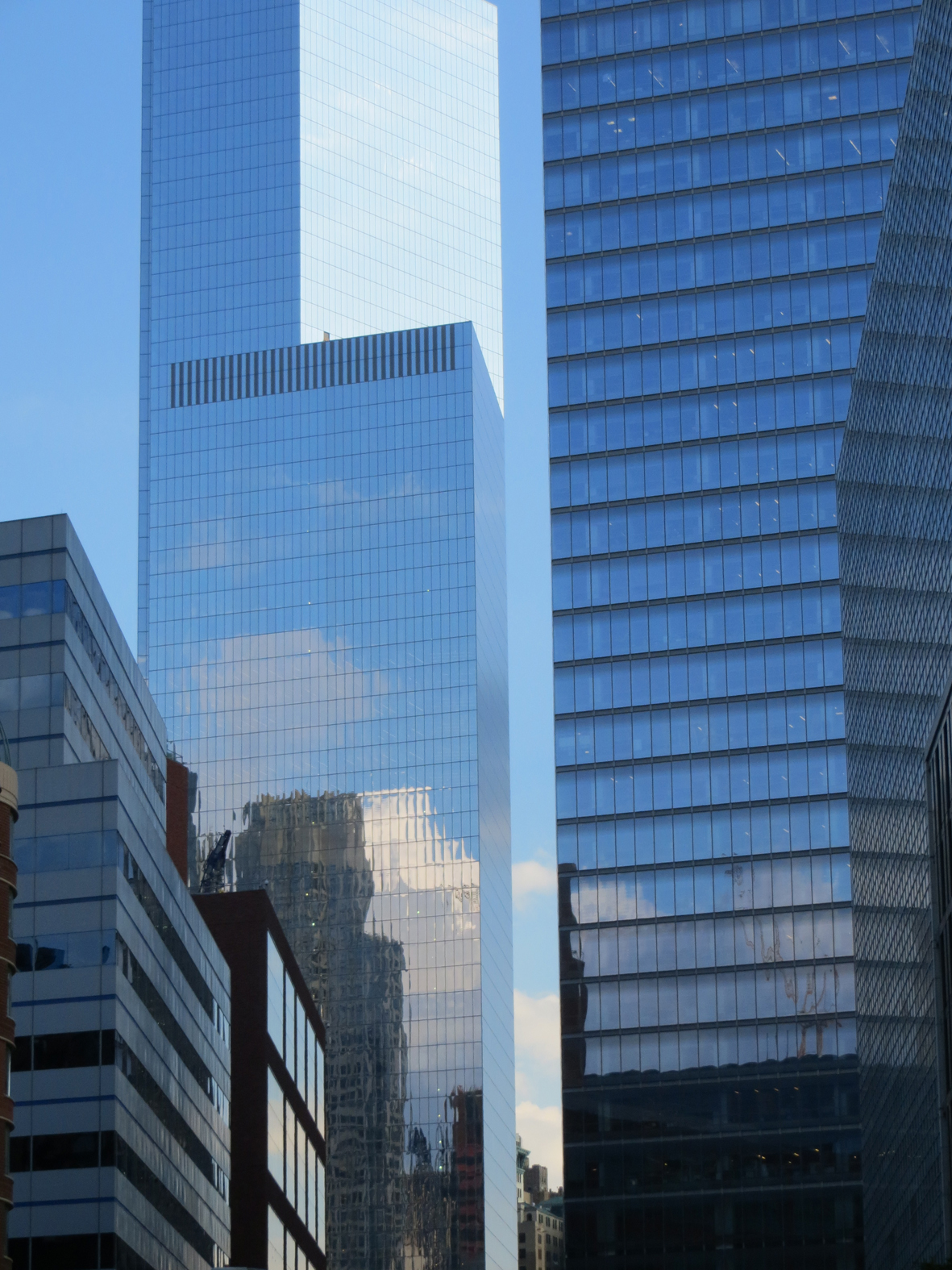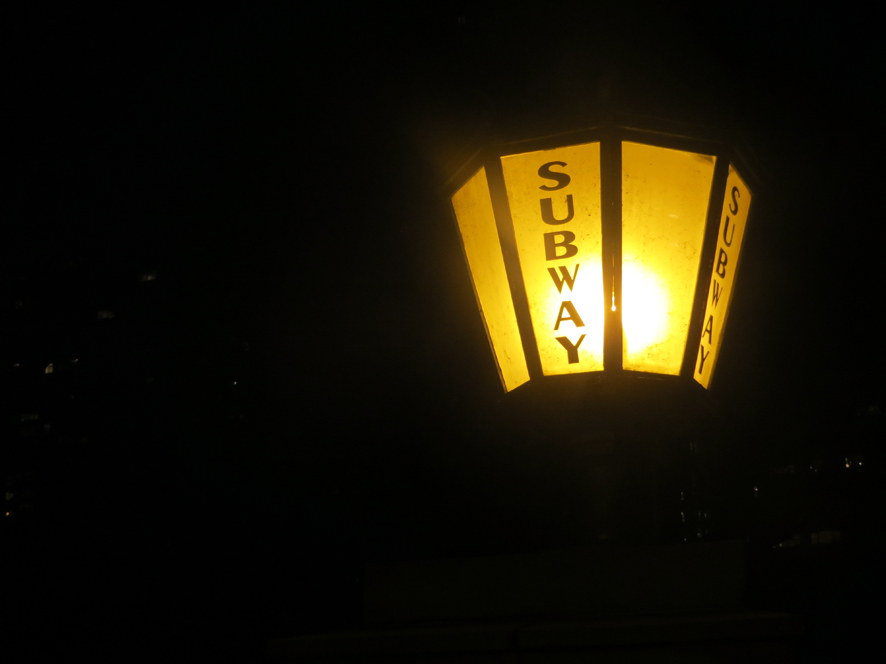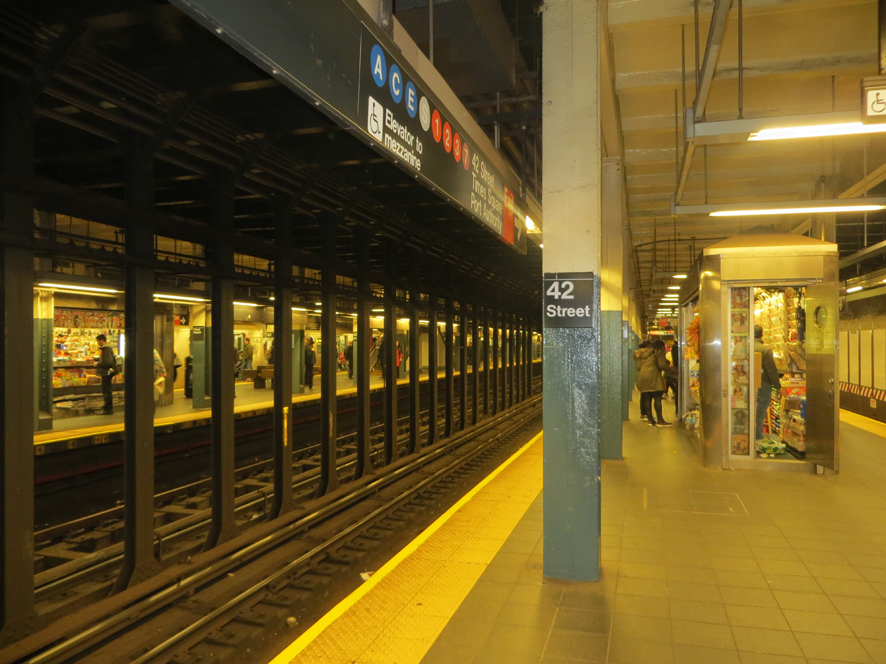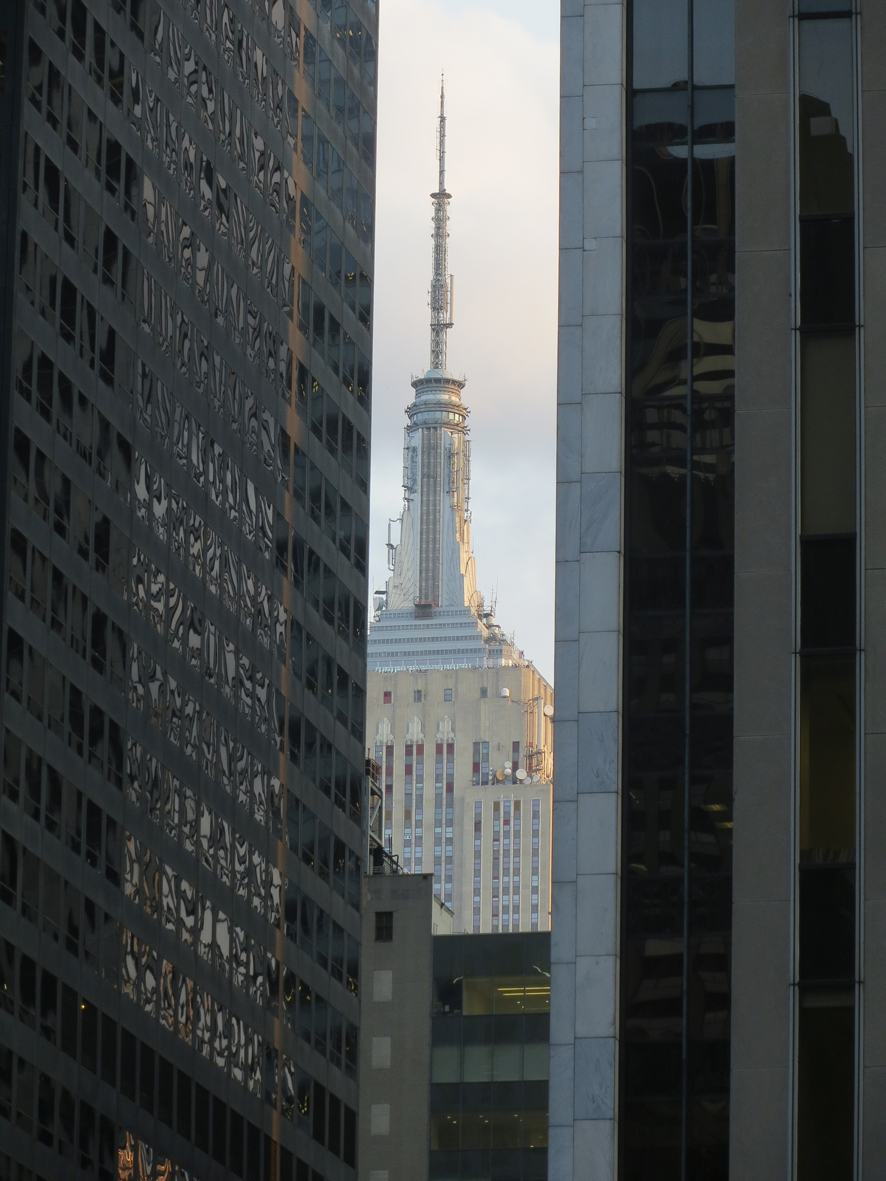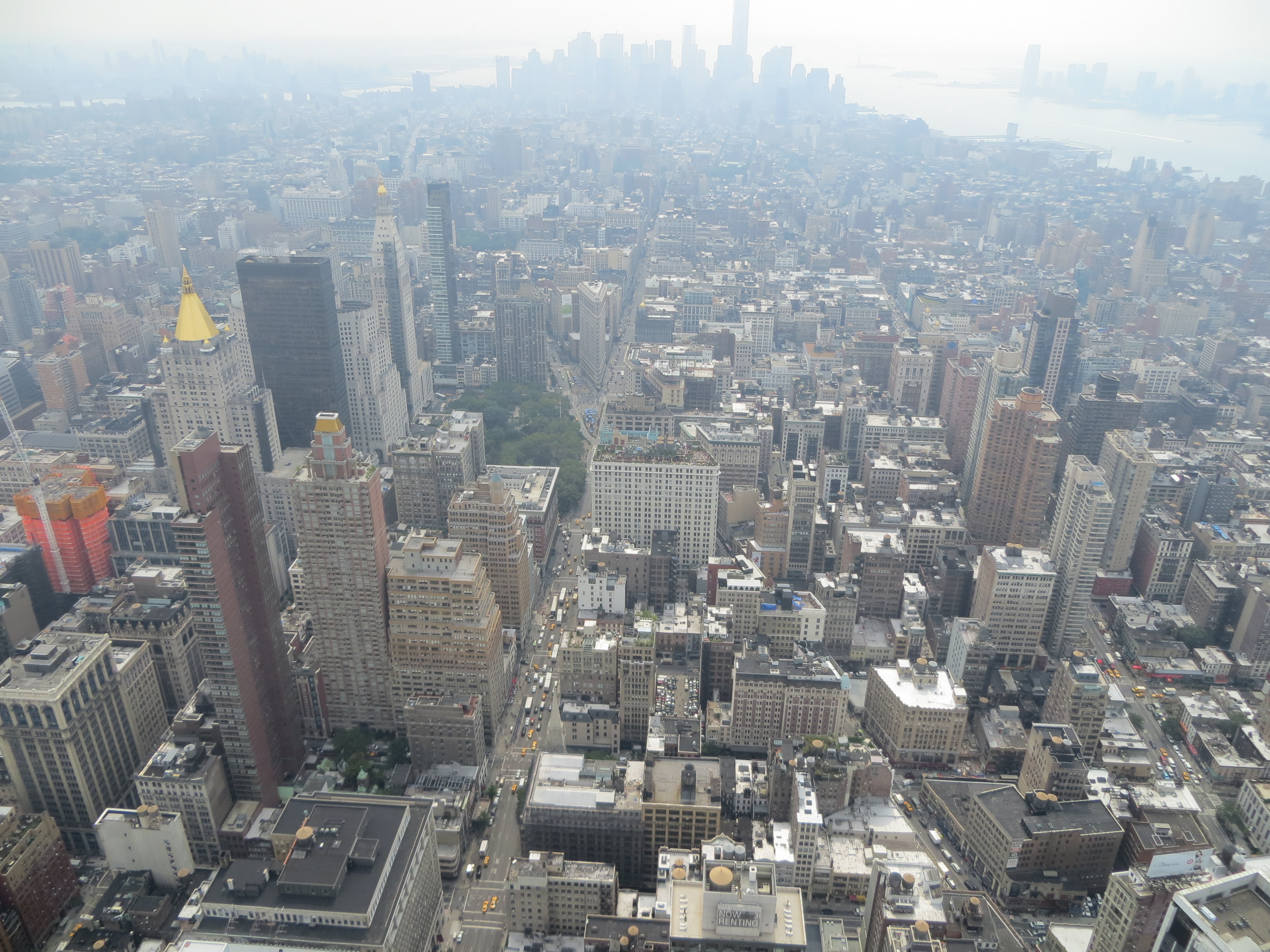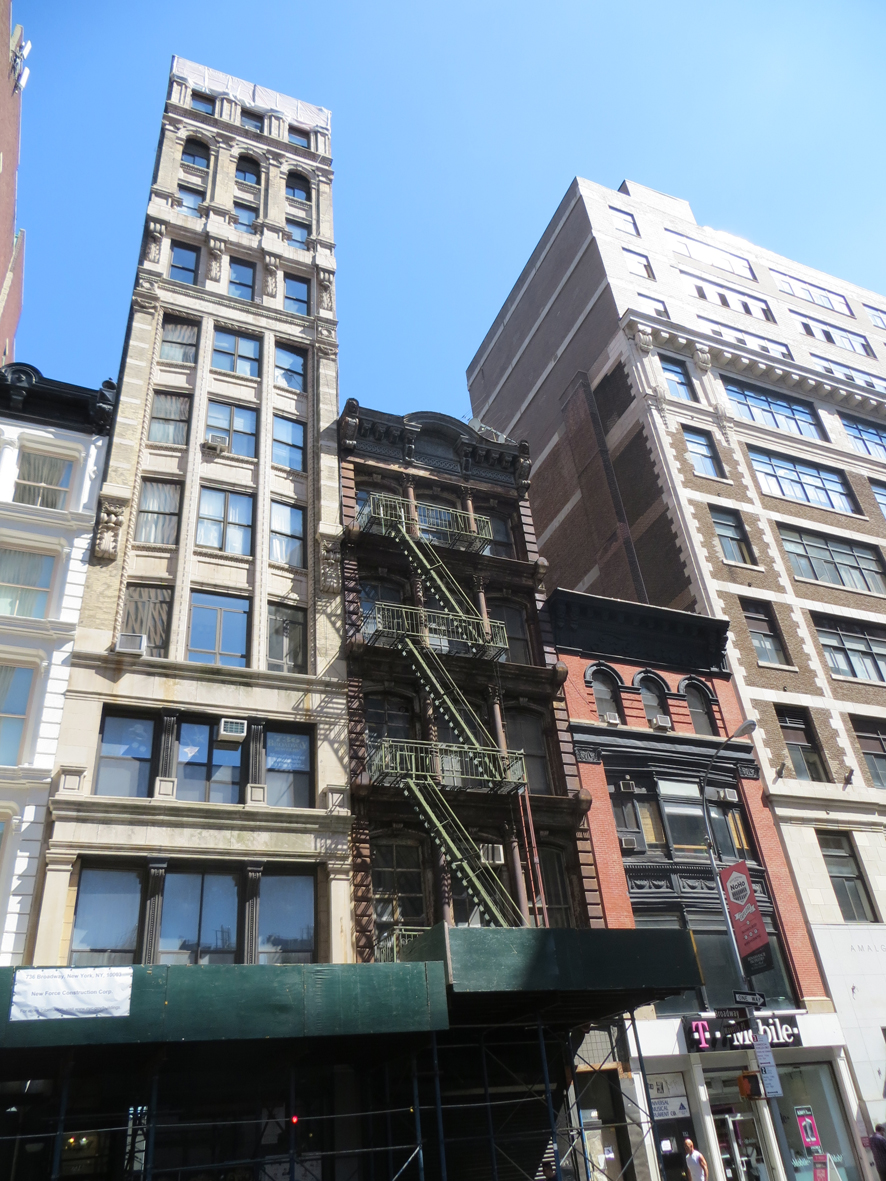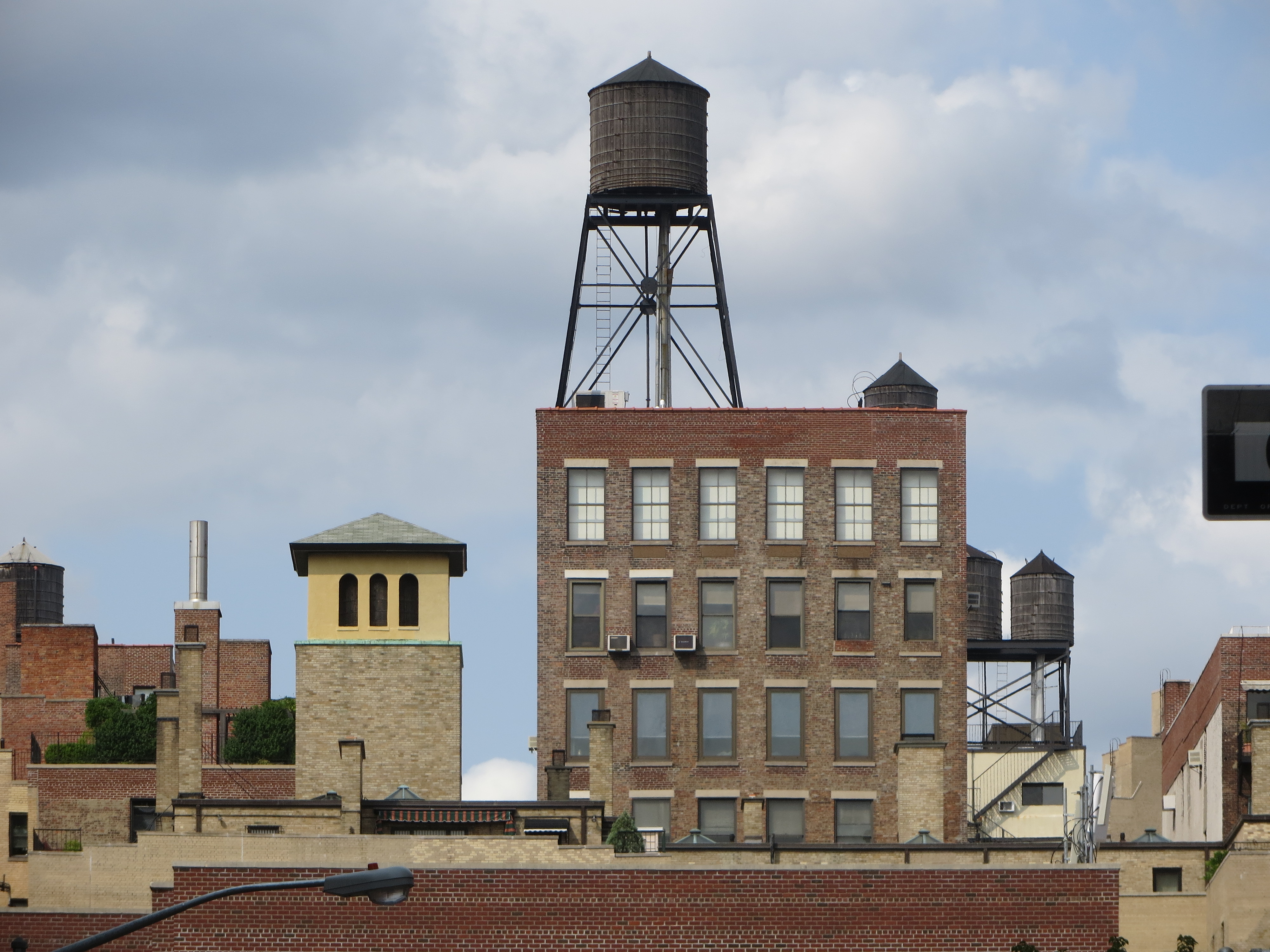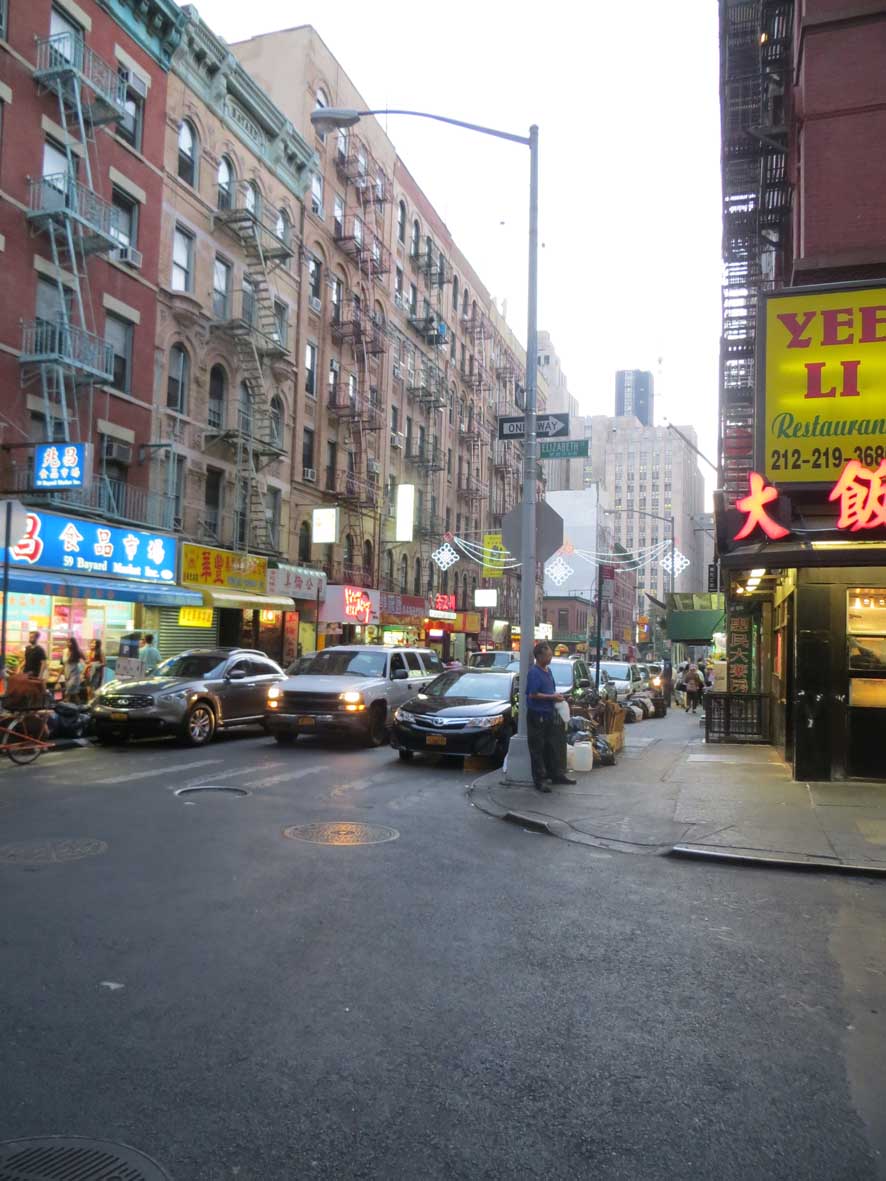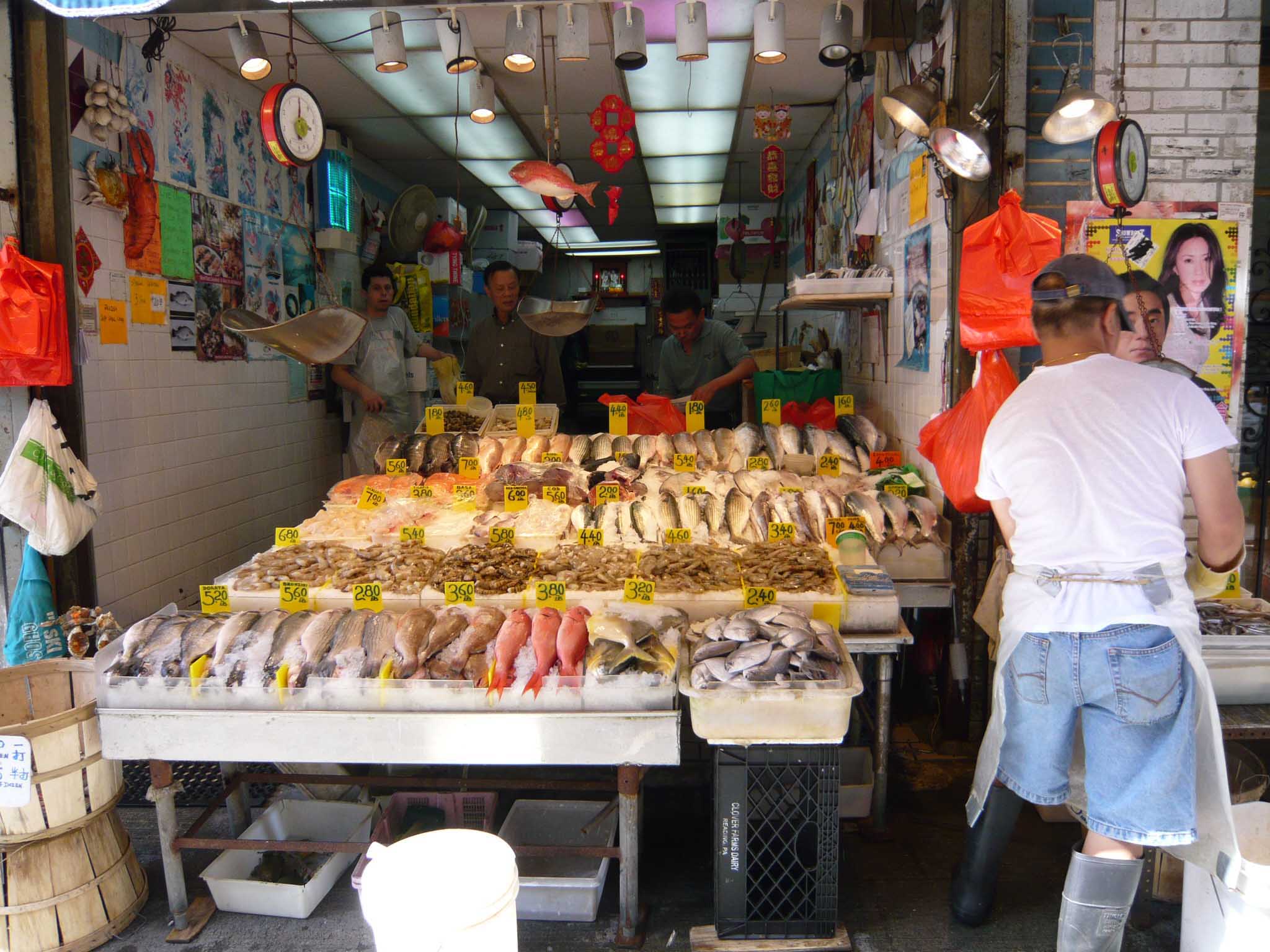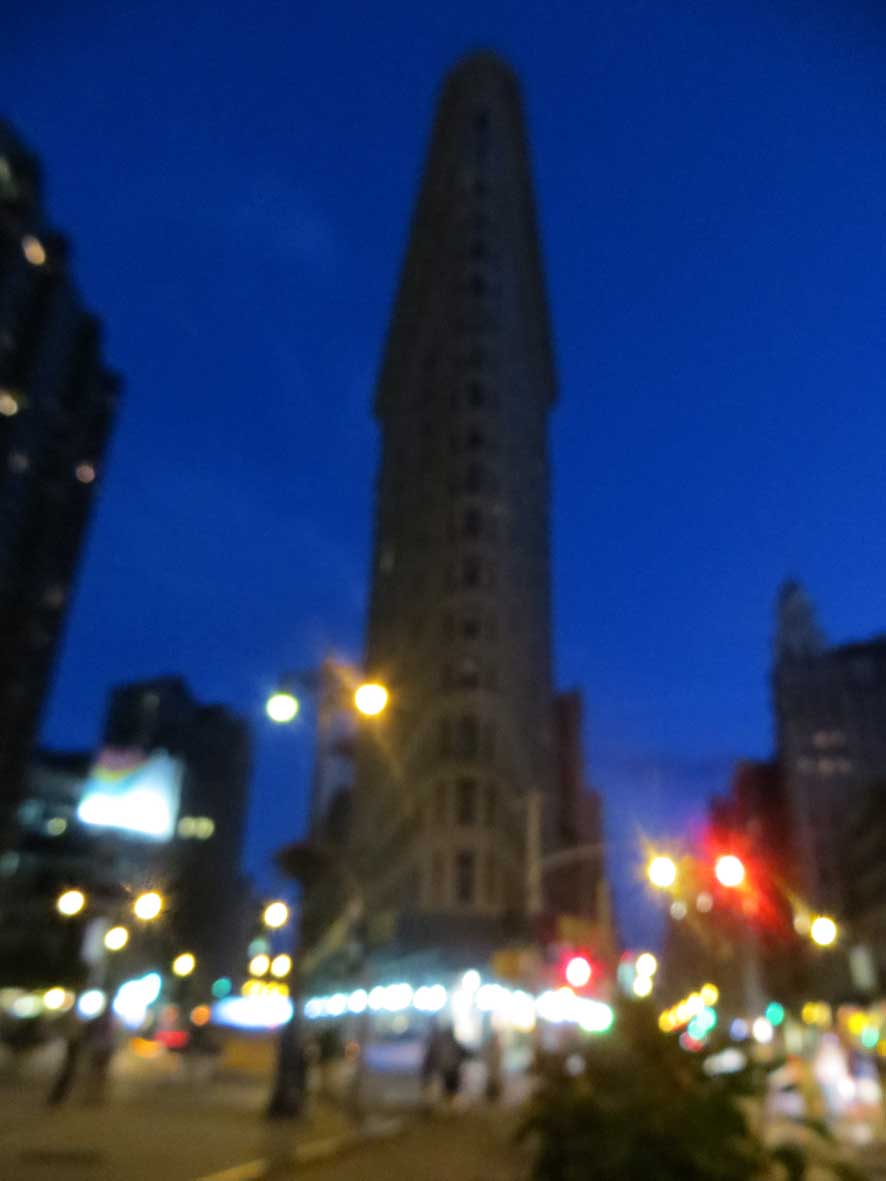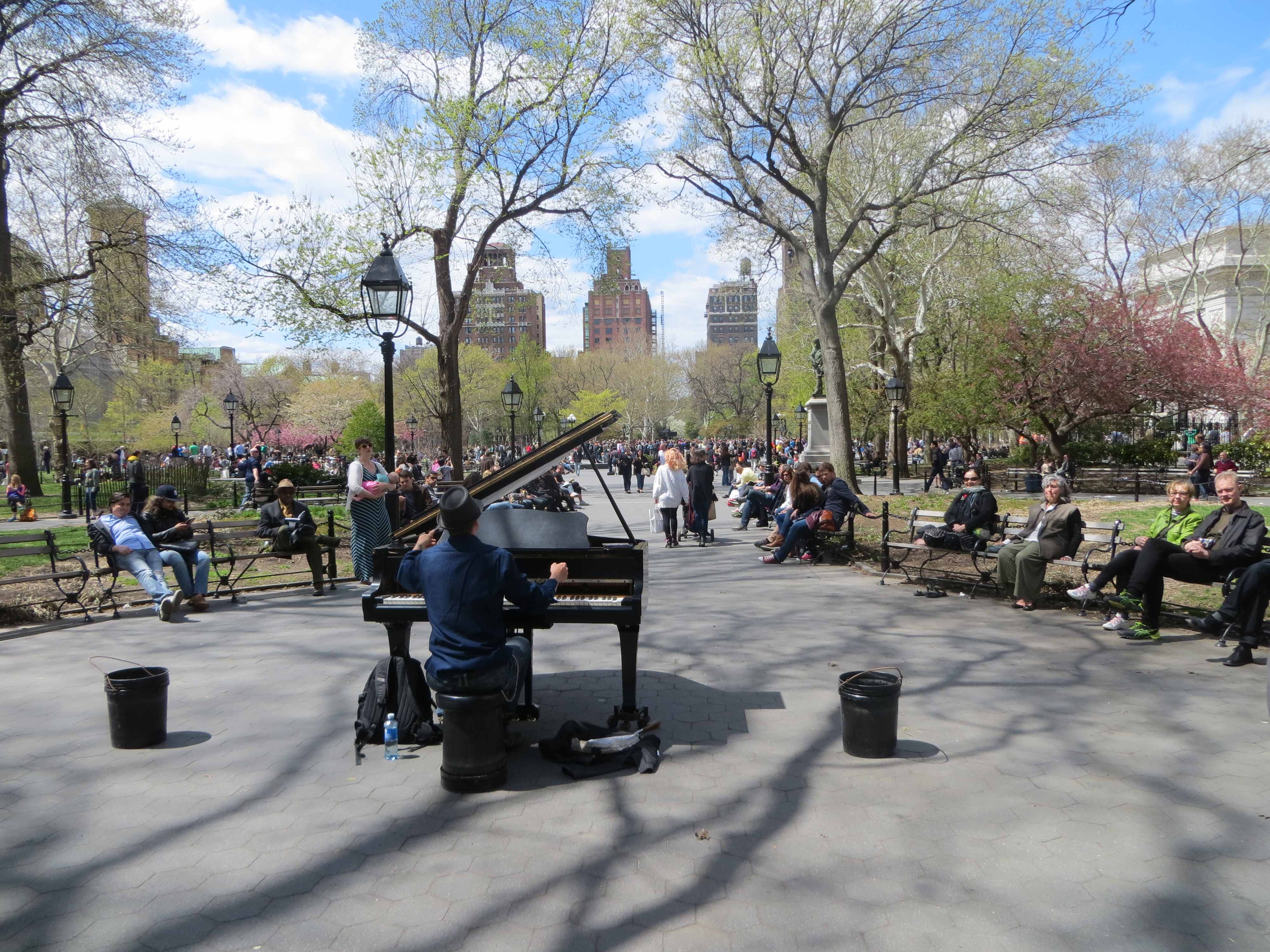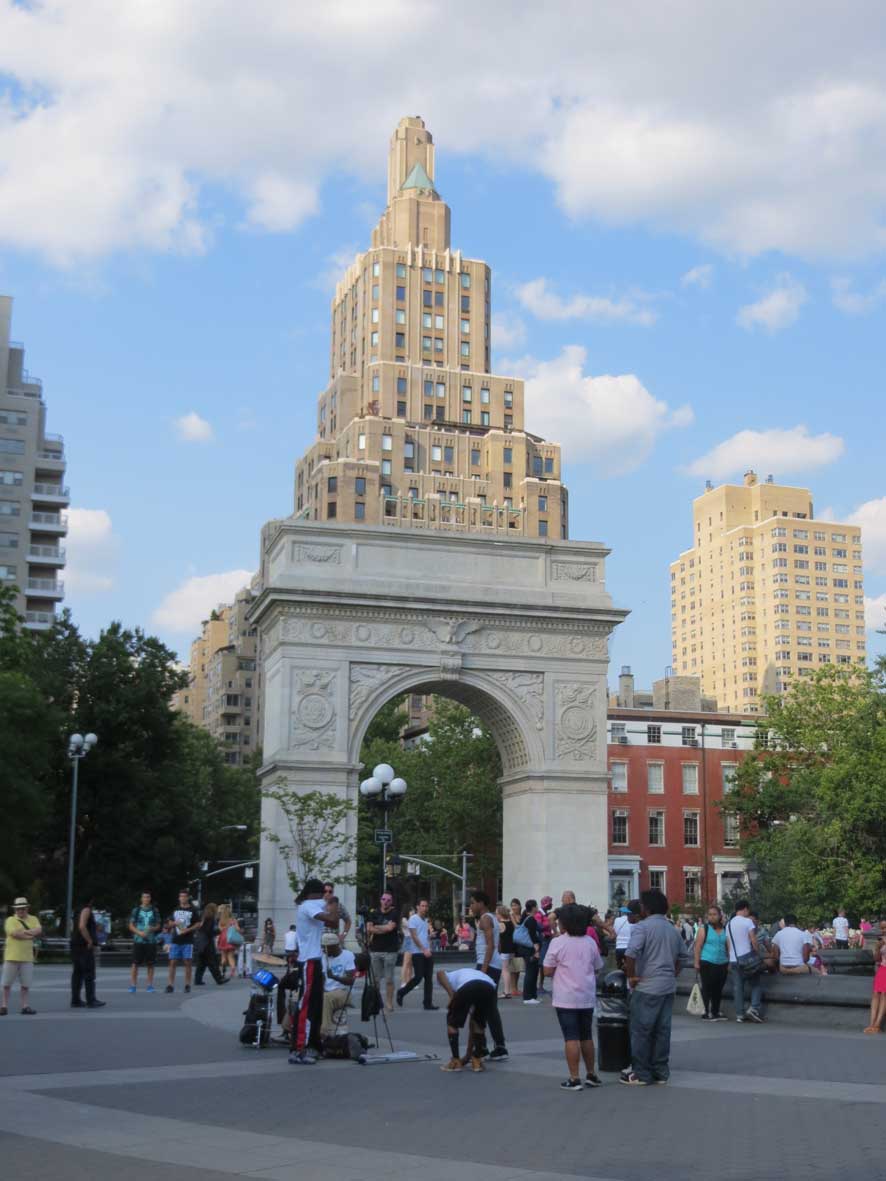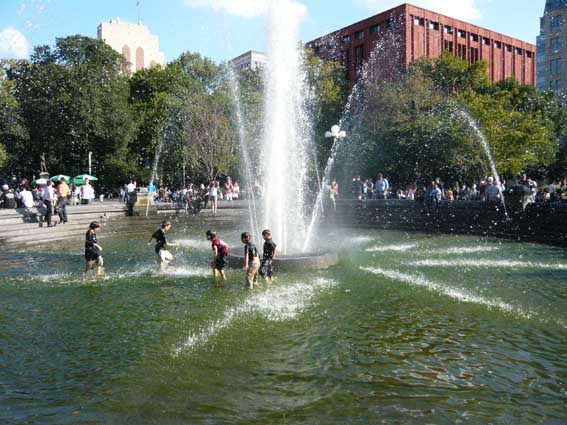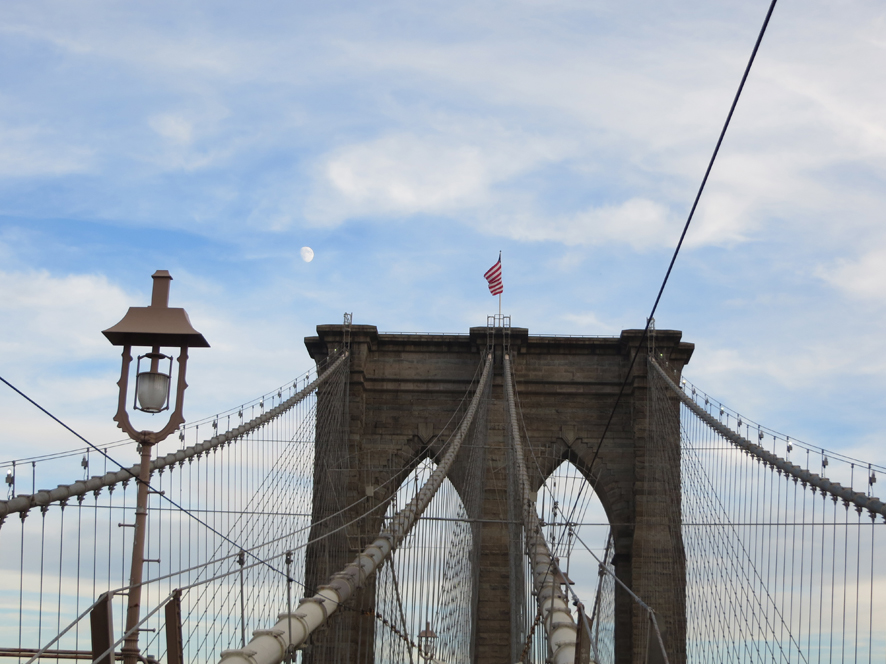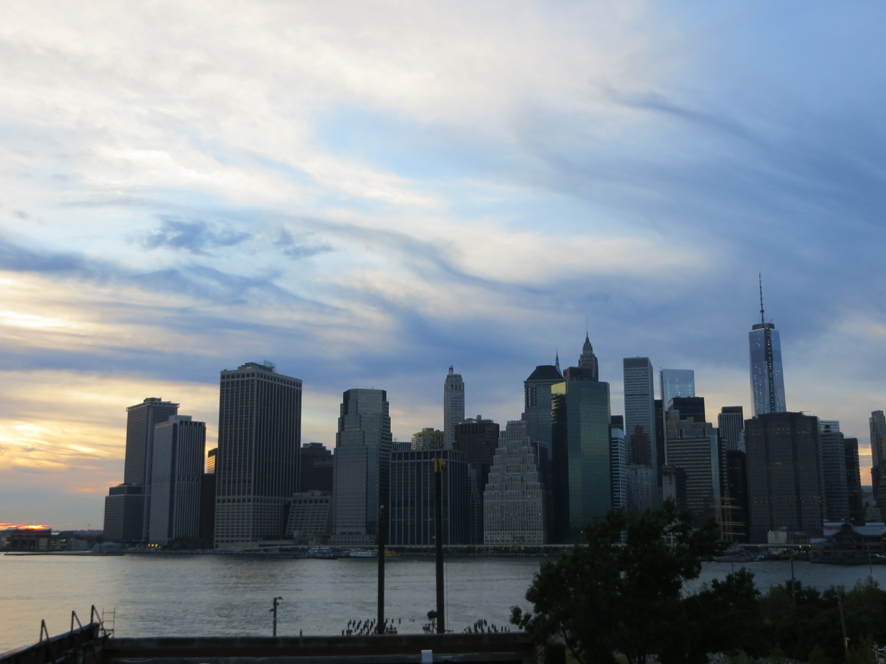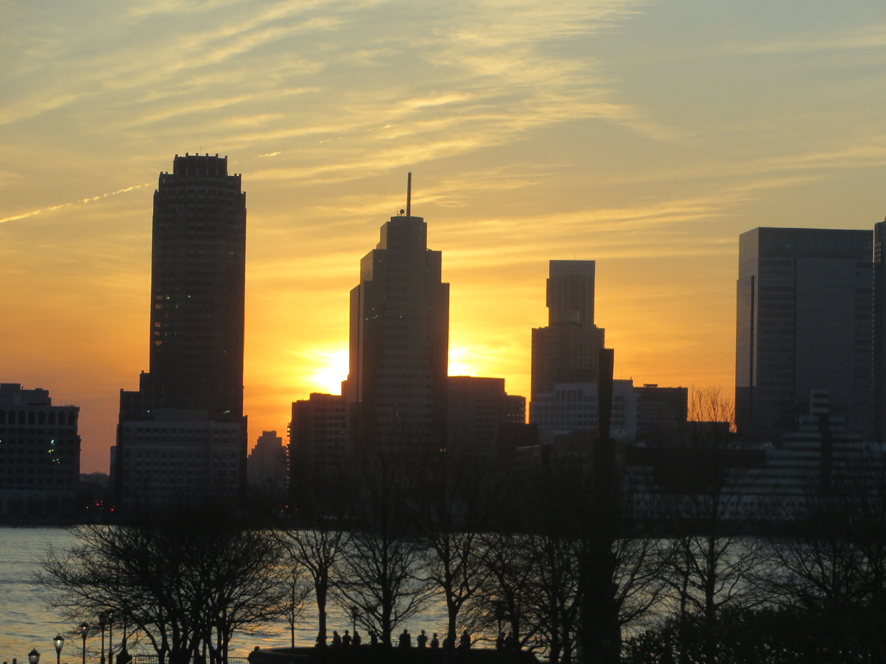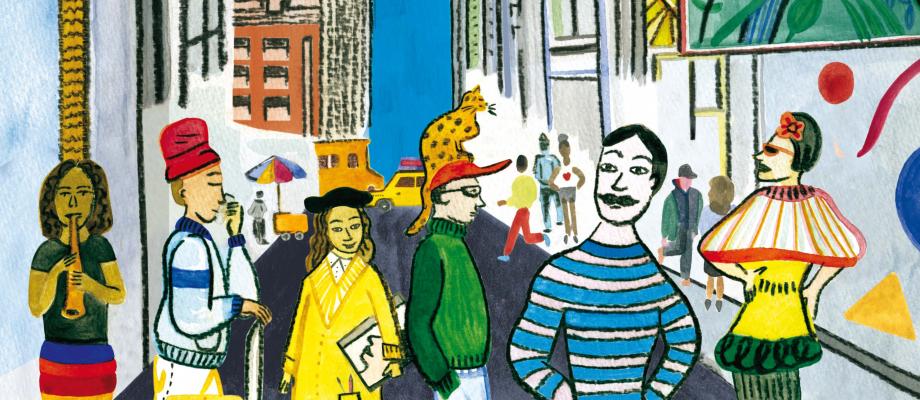
Sortie de joueur (Player's escape)

What happens when a rugby player escapes from a painting by Henri Rousseau. It all starts at the New York Guggenheim Museum...
Jean sets off to explore the city. Amid buildings and masters paintings, from Chinatown to the Museum of Modern Art (MoMA),
he meets an impressive range of characters and landscapes. A great tribute to the world of Henri Rousseau and to New-York.
The book is supported by the Wallonia-Brussels Federation.
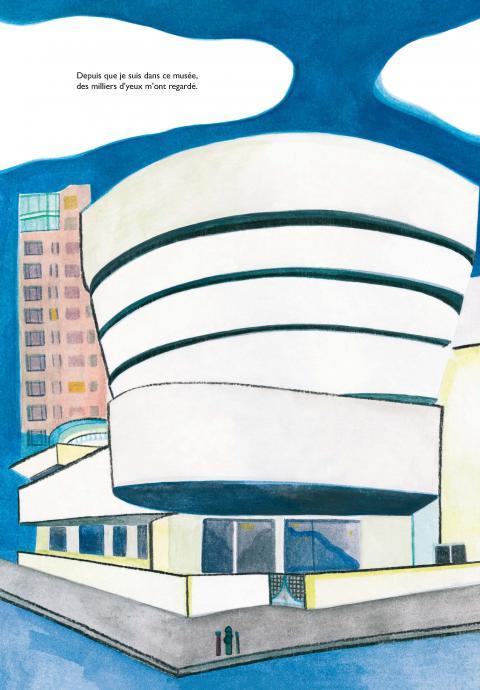
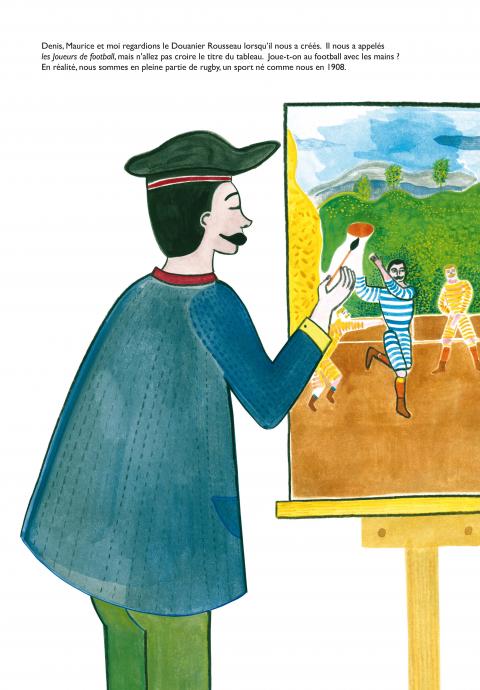
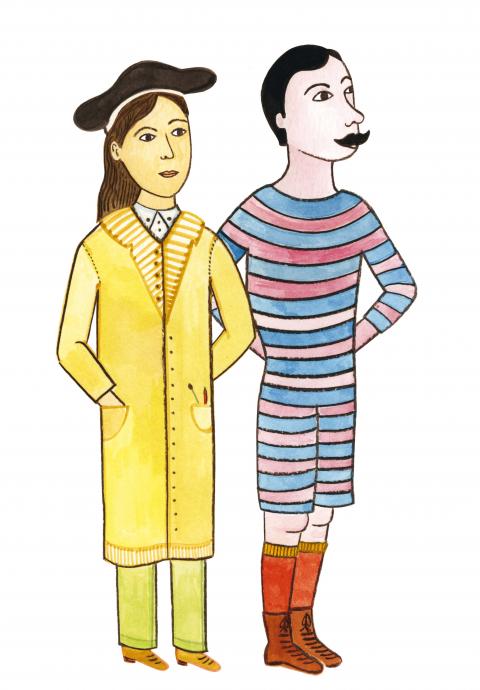
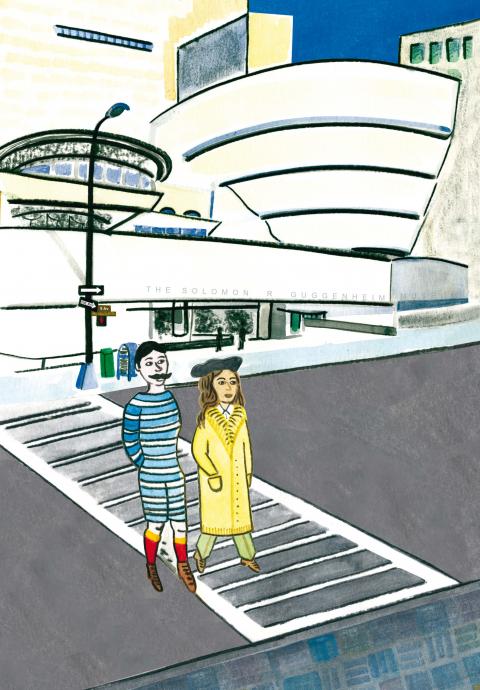
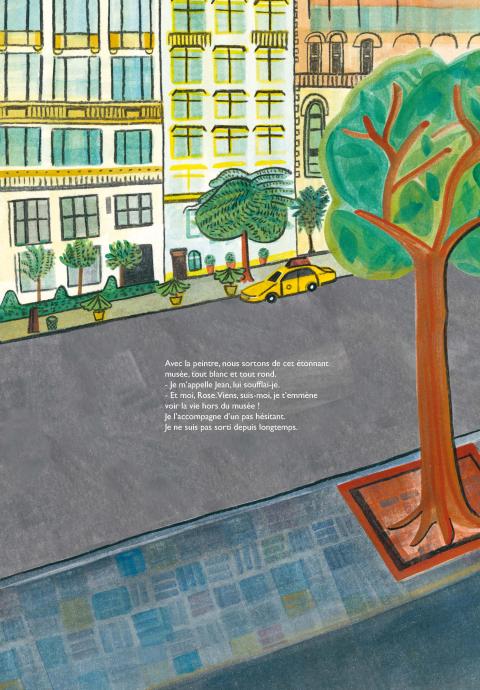
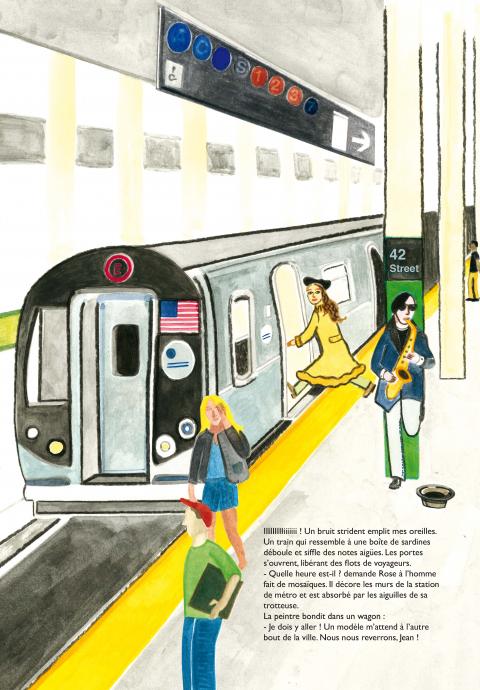
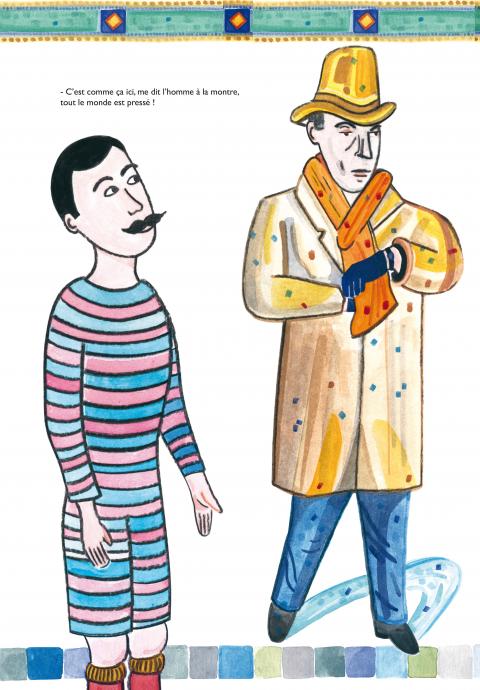
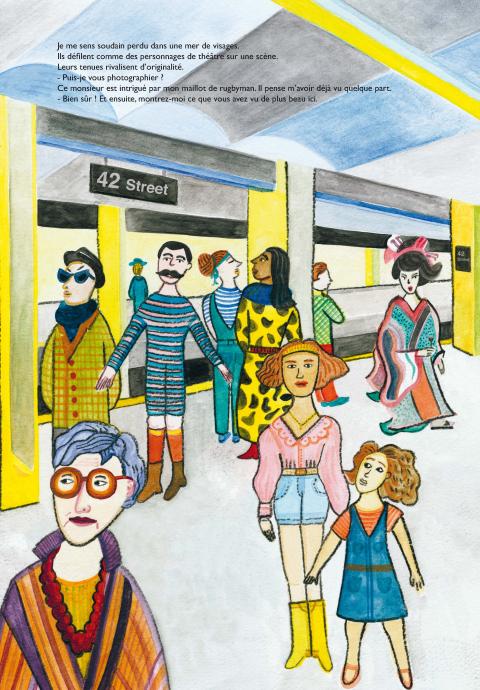
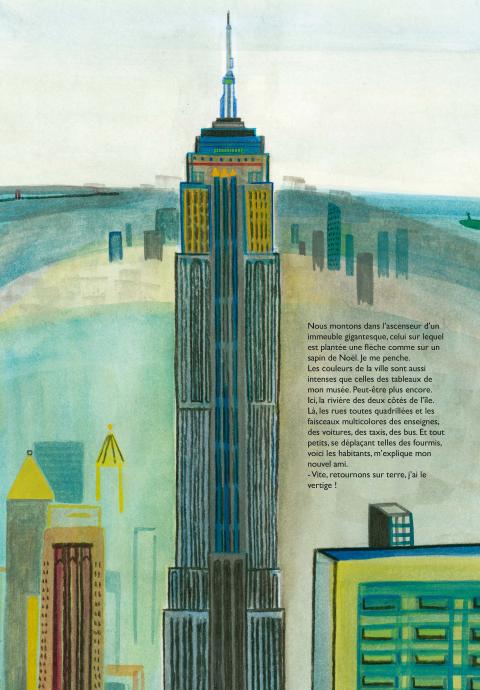
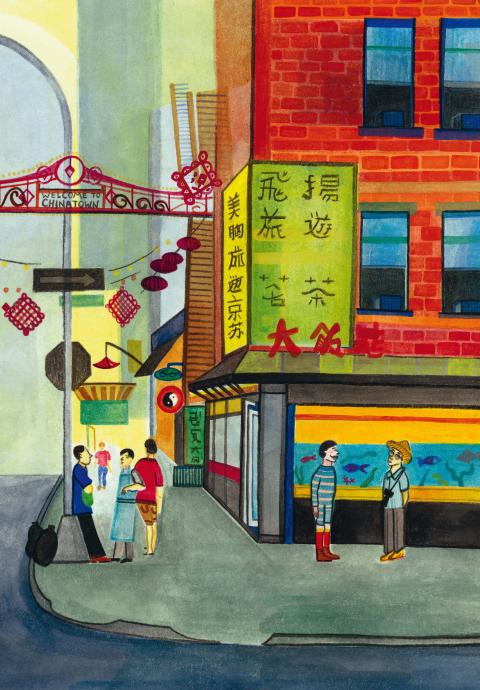
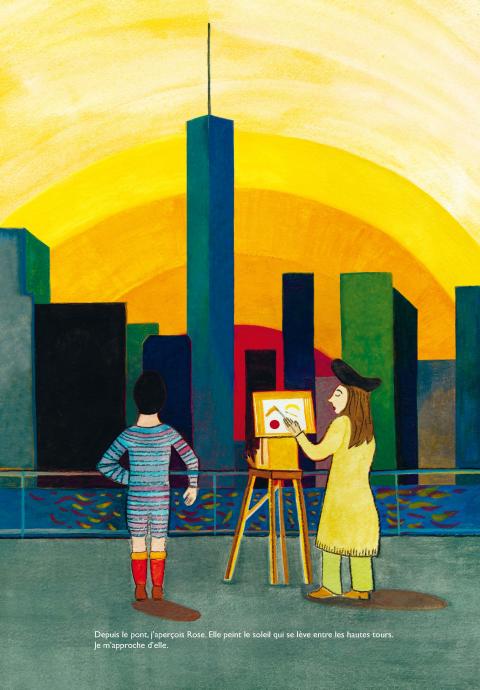
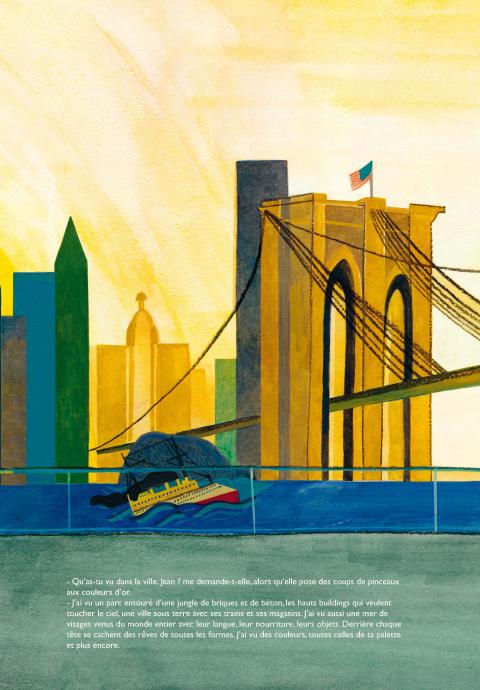
Hide and seek with the works of Henri Rousseau...
The drawings presented below are inspired by the works of Henri Rousseau. They are interspersed throughout the collection as winks to the connoisseurs or those aspiring to be so. The idea is to pay tribute to the artist whilst stimulating the desire to find out about his paintings.
Henri Rousseau and New-York.
The painter and the city meet in a painting, "Les Joueurs de football" (The Football Players), painted in 1908, forms part of the collection of the Salomon R. Guggenheim Museum in New-York.
And what if one of the characters was to escape from the painting to go for a stroll through the city? Such was the initial idea. Two worlds meet and the fun is finding out where the roads cross or instead, where anachronisms are created. However, Henri Rousseau who was passionate about ‘modernity’, which in his day was expressed by the brand new Eiffel Tower and the first aircraft, would perhaps not disapprove of this incursion into the city with its high towers, another kind of jungle ...
Henri Rousseau was born on May 21st 1844 in Laval. His nickname of "Douanier" (Customs Officer) was given to him by his friend Alfred Jarry, while Henri was working on the customs & excise tolls of the Paris octroi. In his spare time he painted. Self-taught, he nevertheless picked up advice from academic painters, Clément and Gérôme.
At the age of fifty, he retired and devoted all his time to his work as a painter.
A stationary traveller, he was inspired by his readings of 'Tour du monde' (Around the World) and his visits to Paris's botanical garden "Jardin des Plantes". The greenhouses containing tropical species were to become a place of intense observation for him. In his paintings, he inspired the same feeling of suffocation, heat and more surprisingly the silence that prevailed there. No rare bird ever came to awake Le Douanier Rousseau from his dreams, not one single piercing cry.
His seemingly clumsy technique and naïve style, have long been criticised during his lifetime. Although appearing each year with a new canvas at the art exhibition for independent artists "Salon des Indépendants", it was only at the end of his career that he received the recognition of his peers. Picasso celebrated him, organising a banquet in his honour and buying his paintings. But also Delaunay, Fernand Léger and Guillaume Apollinaire counted him in amongst their circle of artist friends. Rousseau embarked upon a very personal route with his painting.
It led, among other things, towards surrealism. The disturbing strangeness dear to Breton, Tzara or Magritte, is palpable in Rousseau's compositions, particularly in the jungle landscapes. "Le Rêve" (The Dream), a picture also on show at the Museum of Modern Art in New-York, perfectly represents this strange atmosphere of a conventional subject, the nude model placed on a couch, arranged in the unusual context of a jungle camouflaging its wild animals.
"Le Rêve" (The Dream), 1910
This painting was completed in the year of his death.
Henri Rousseau added a caption :
« Yadwigha dans un beau rêve / s’étant endormie doucement / entendant les sons d’une musette / D’un charmeur bien pensant / Pendant que le lune reflète / Sur les fleurs, les arbres verdoyants / Les fauves serpents prêtant l’oreille / Aux airs gais de l’instrument »
(Translation: "Yadwigha in a beautiful dream / Having fallen gently to sleep / Heard the sounds of a reed instrument / Played by a well-intentioned (snake) charmer / As the moon reflected / On the flowers, the verdant trees / The wild snakes lend an ear / To the joyous tunes of the instrument")
The work "La charmeuse de serpent" (The Snake Charmer) (1907) was inspired by the story of the trips to India made by Robert Delaunay's mother who had commissioned him to do the painting. The artist only ever travelled in his dreams, which explains the discrepancies between the reality of the countries and the places evoked, and what he shows of them. He was aware of this and asserted painting as a discipline in opposition to photography. The jungles that he painted from 1905 to 1910, twenty-five versions in all, do not exist anywhere and yet did not displease the dreamers who believed the verses of Apollinaire, engraved on the painter's tombstone.
"Les Joueurs de Football" (The Football Players) held my attention, both for their comical and theatrical characters. Constrained like puppets or marionettes, with moustaches, dancing in a picturesque setting, as in a mechanical choreography, these four characters do not play football as the title suggests, but rugby. This sport has newly arrived in France in 1908, the year of the painting. As with the Eiffel Tower, Rousseau, who was the first to depict it in a painting (the parallel could be made in poetry with Cendrars), seized this new theme.
Henri Rousseau did not seek realism. The forest around the edge of the field seems to be reduced in size next to that of the players. They appear to be twins and are so similar that the hypothesis of the decomposition of movements by the same character is not incongruous. The photographic works by Marey come to mind here.
From a technical perspective, the painting is a series of drawing overlays. The artist achieves a collage effect. No depth of field or perspective effect are sought. The space is assumed as imaginary. Everything is flat like a theatre set. The atmosphere is bordering on the supernatural. Rousseau knew perfectly how to convey in paintings, his own world that was so unique and enigmatic. Despite the critics, he persevered in a style that was far removed from academicism or realistic virtuosity. The scenes from his dreams transport us into his world.
« Tu te souviens, Rousseau, du paysage astèque,
Des forêts où poussaient la mangue et
l’ananas,
Des singes répandant tout le sang des
pastèques
Et du blond empereur qu’on fusilla là-bas.
Les tableaux que tu peins, tu les vis au
Mexique :
Un soleil rouge ornait le front des bananiers
et valeureux soldat, tu troquas ta tunique
Contre le dolman bleu des braves douaniers.»
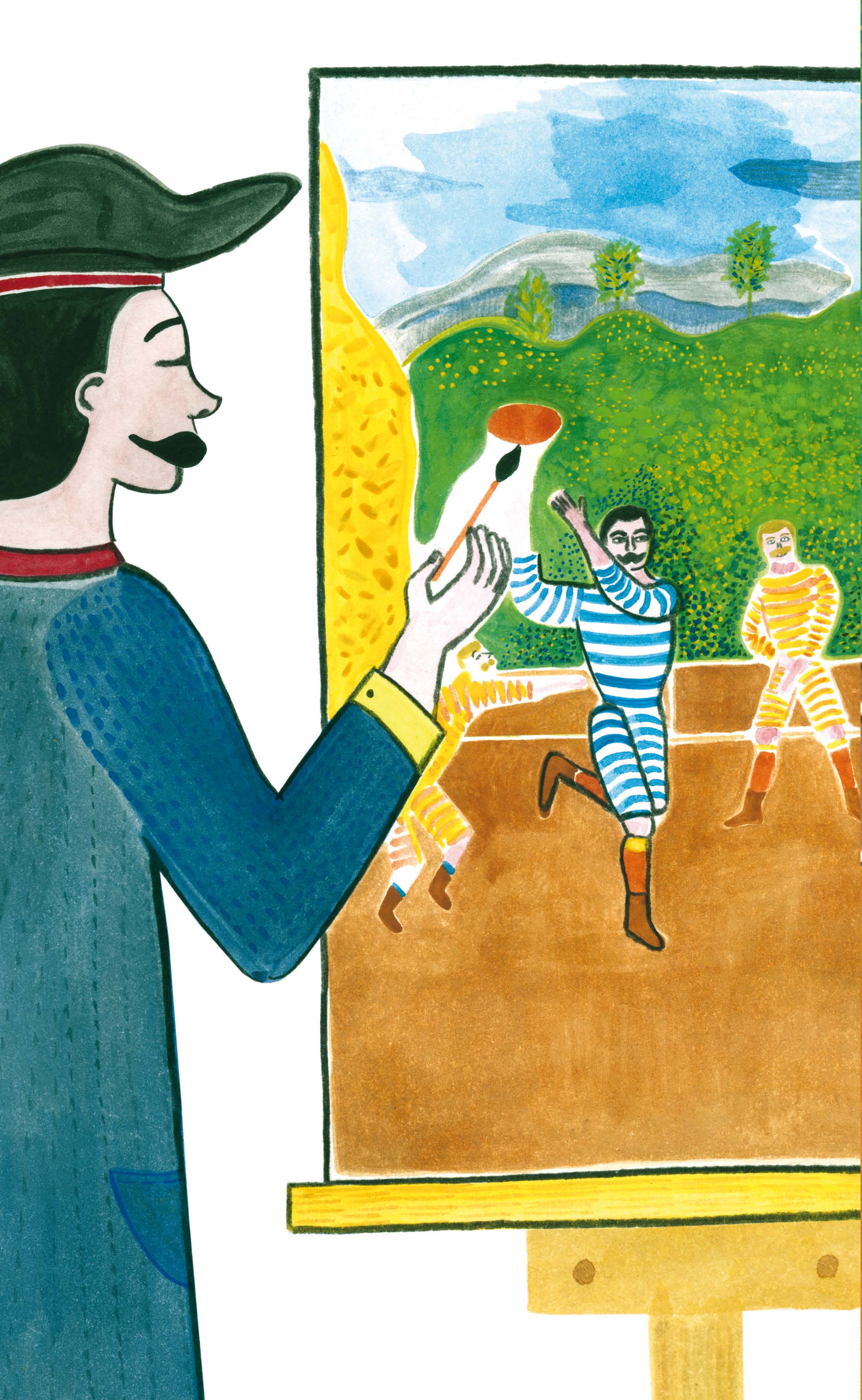
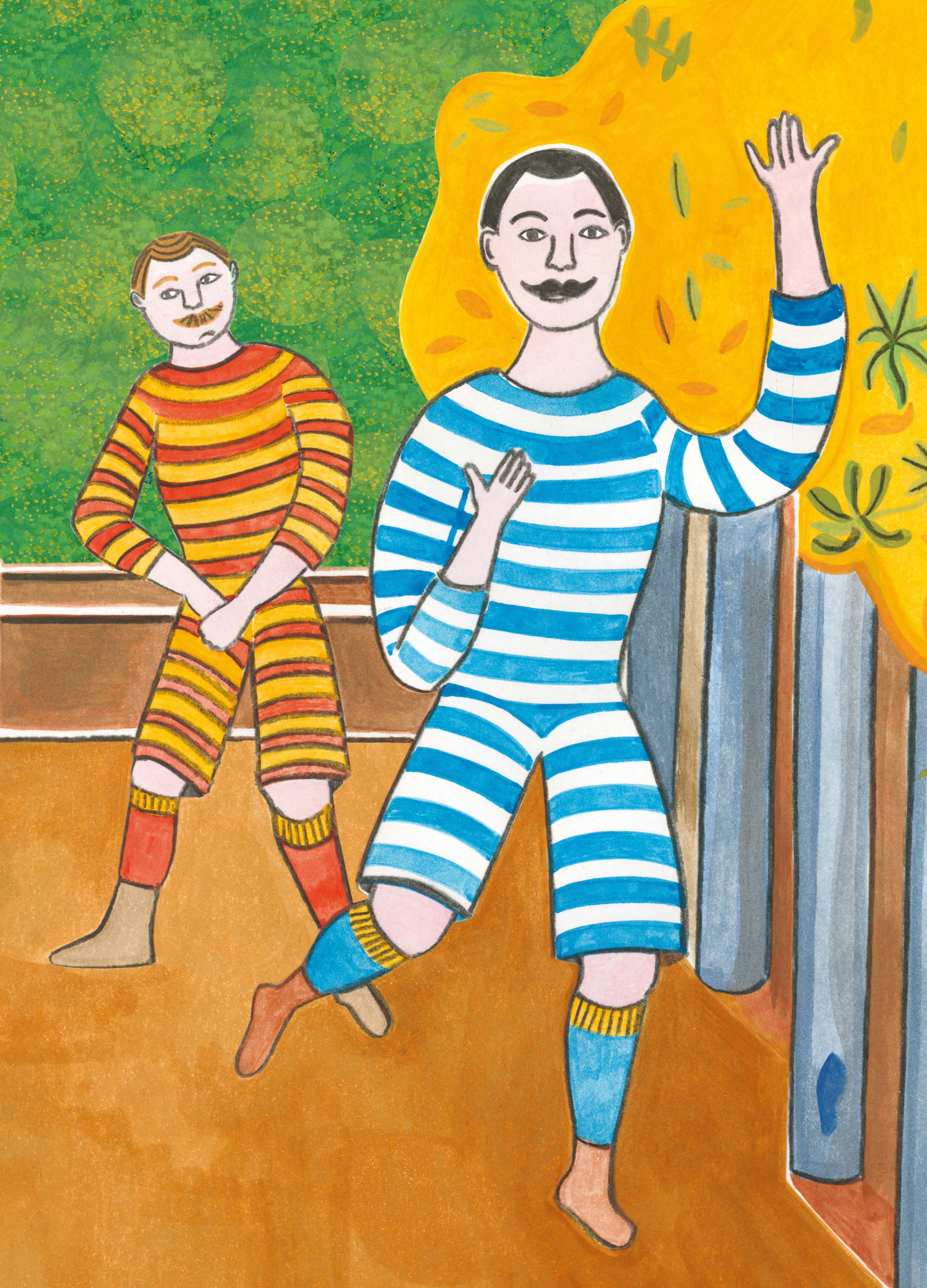
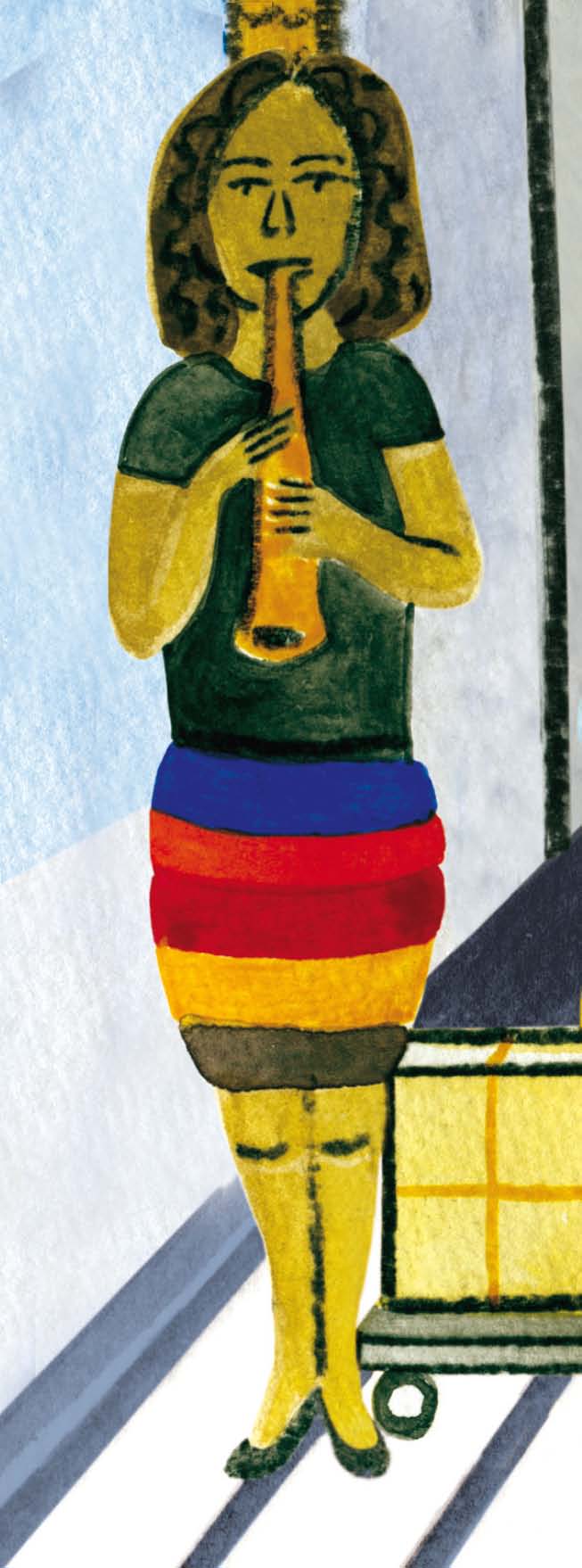
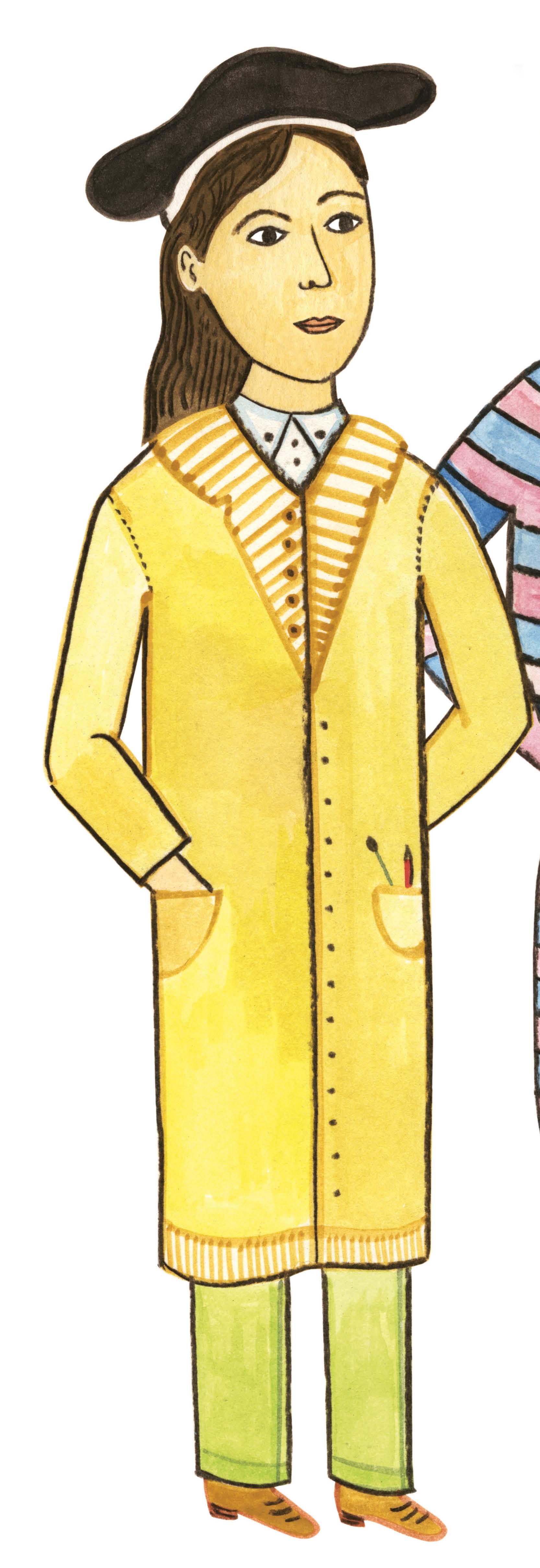
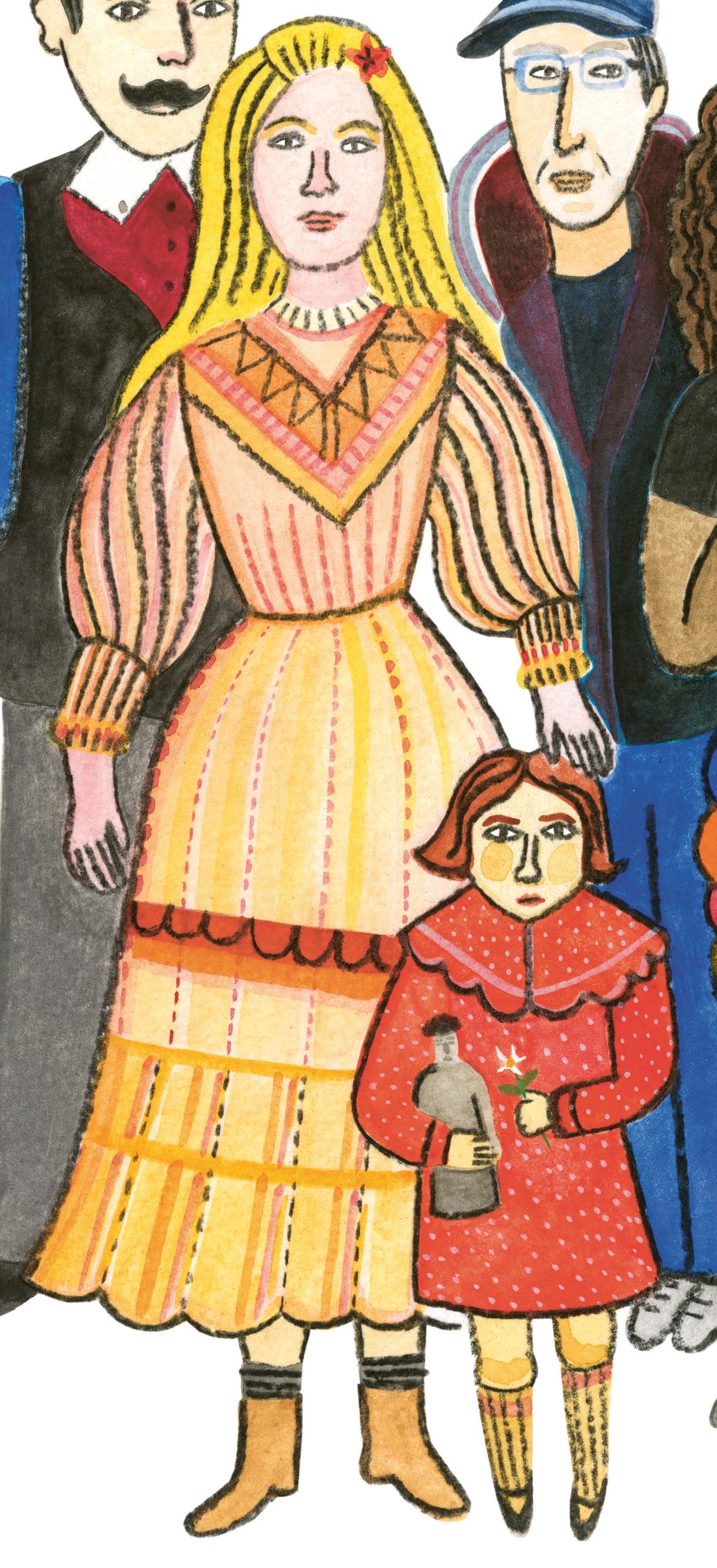
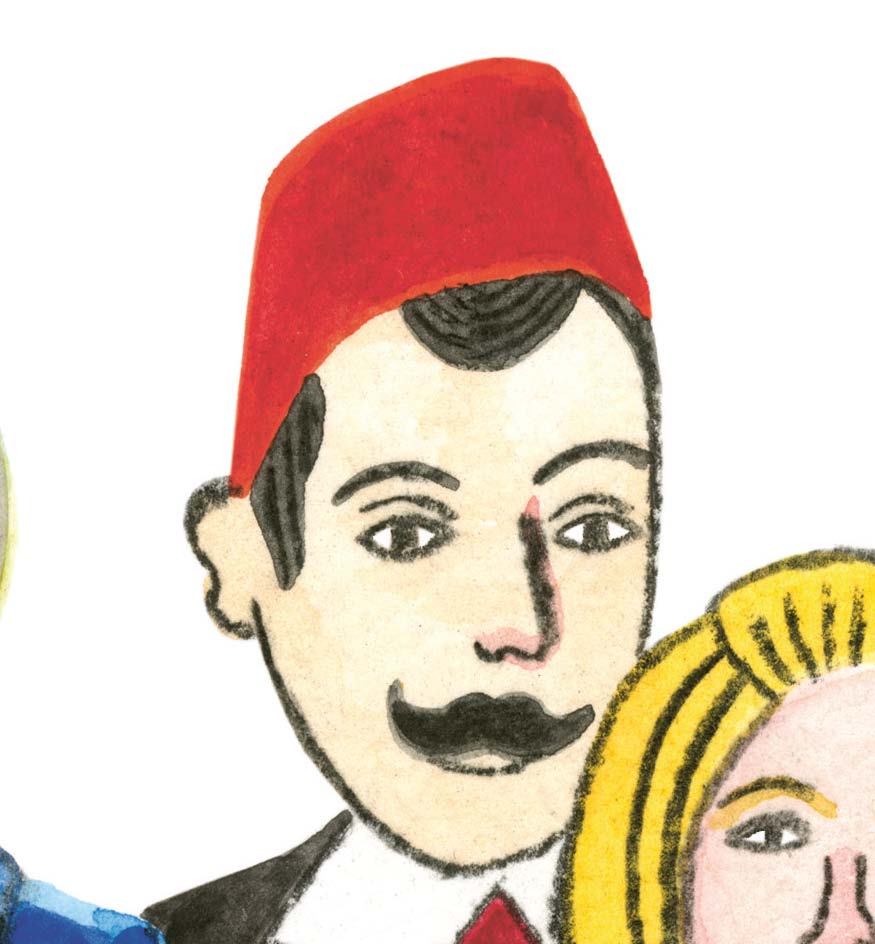
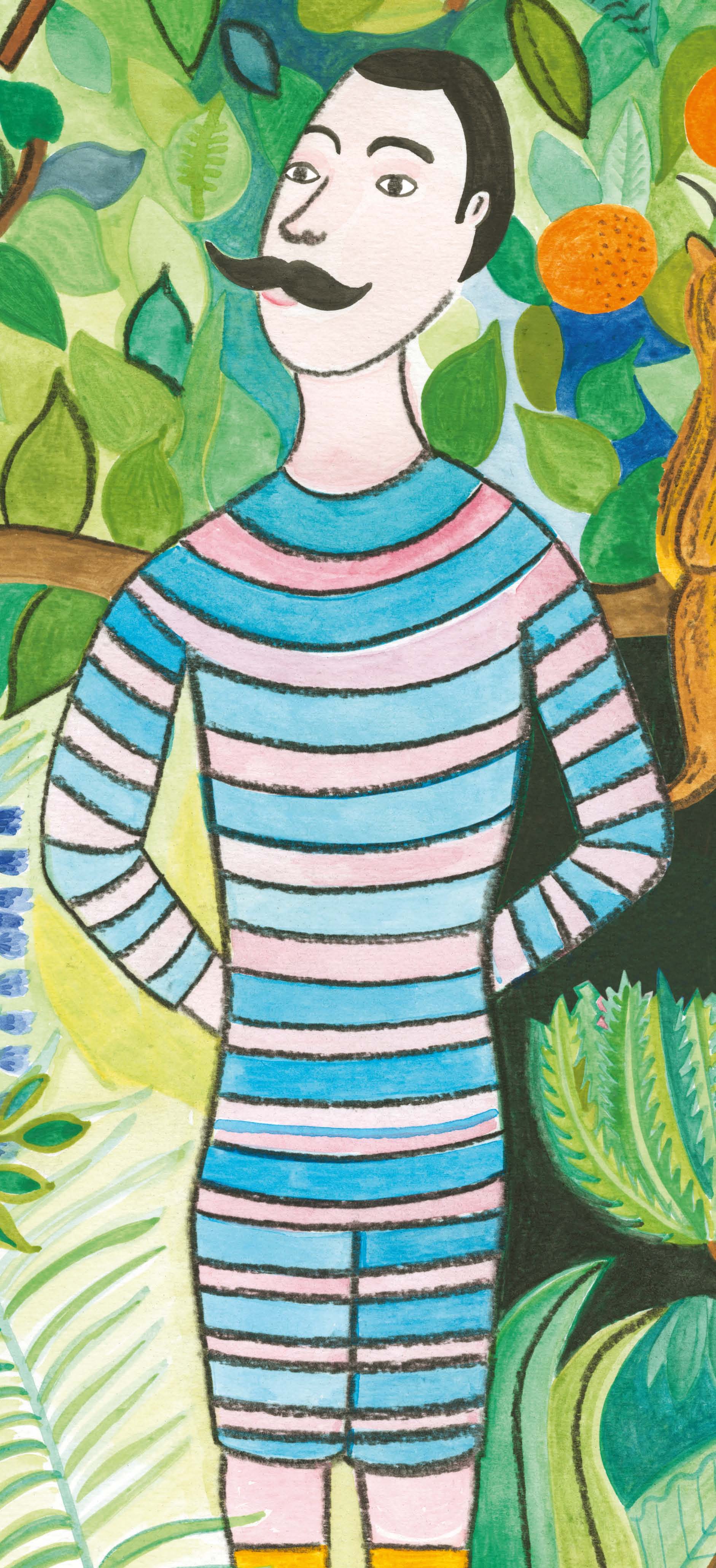
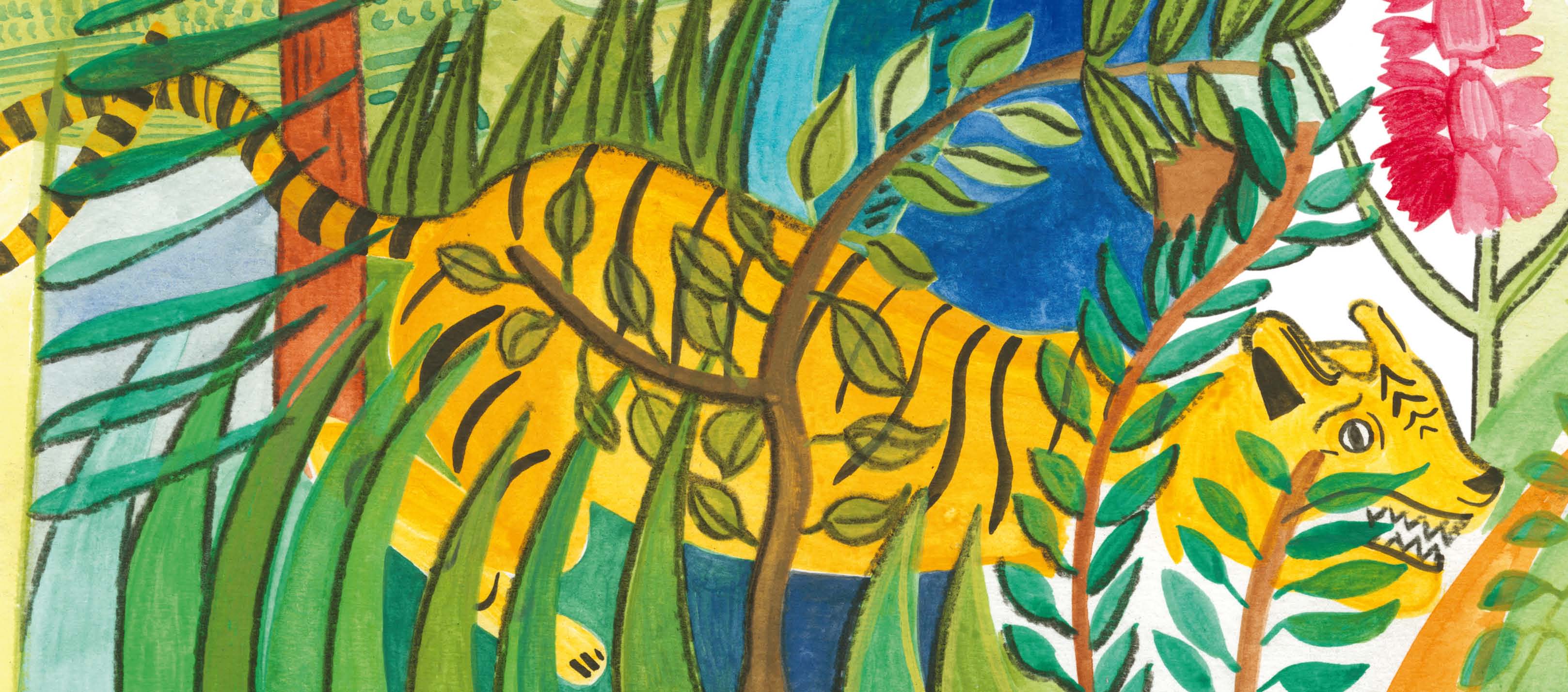
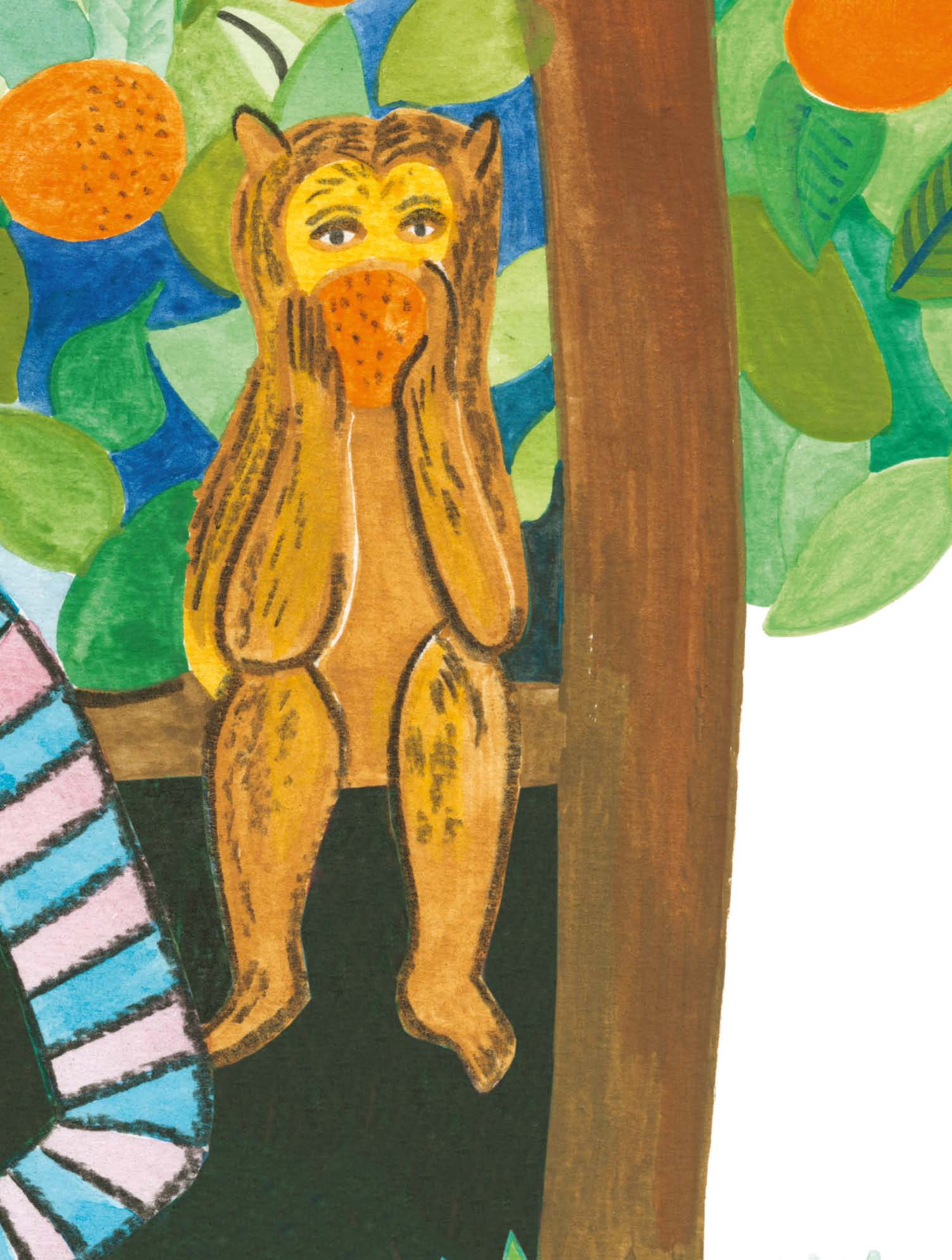
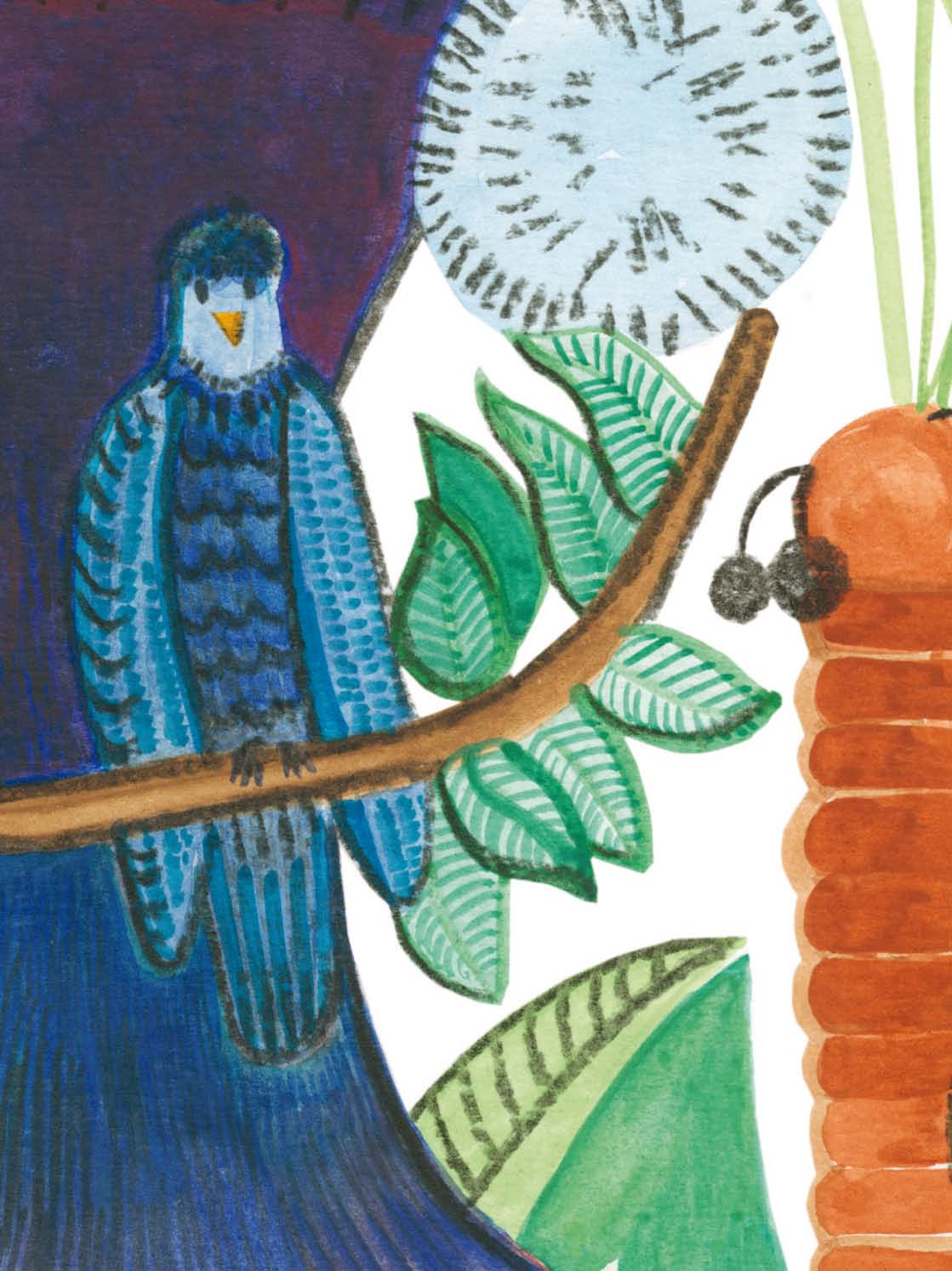
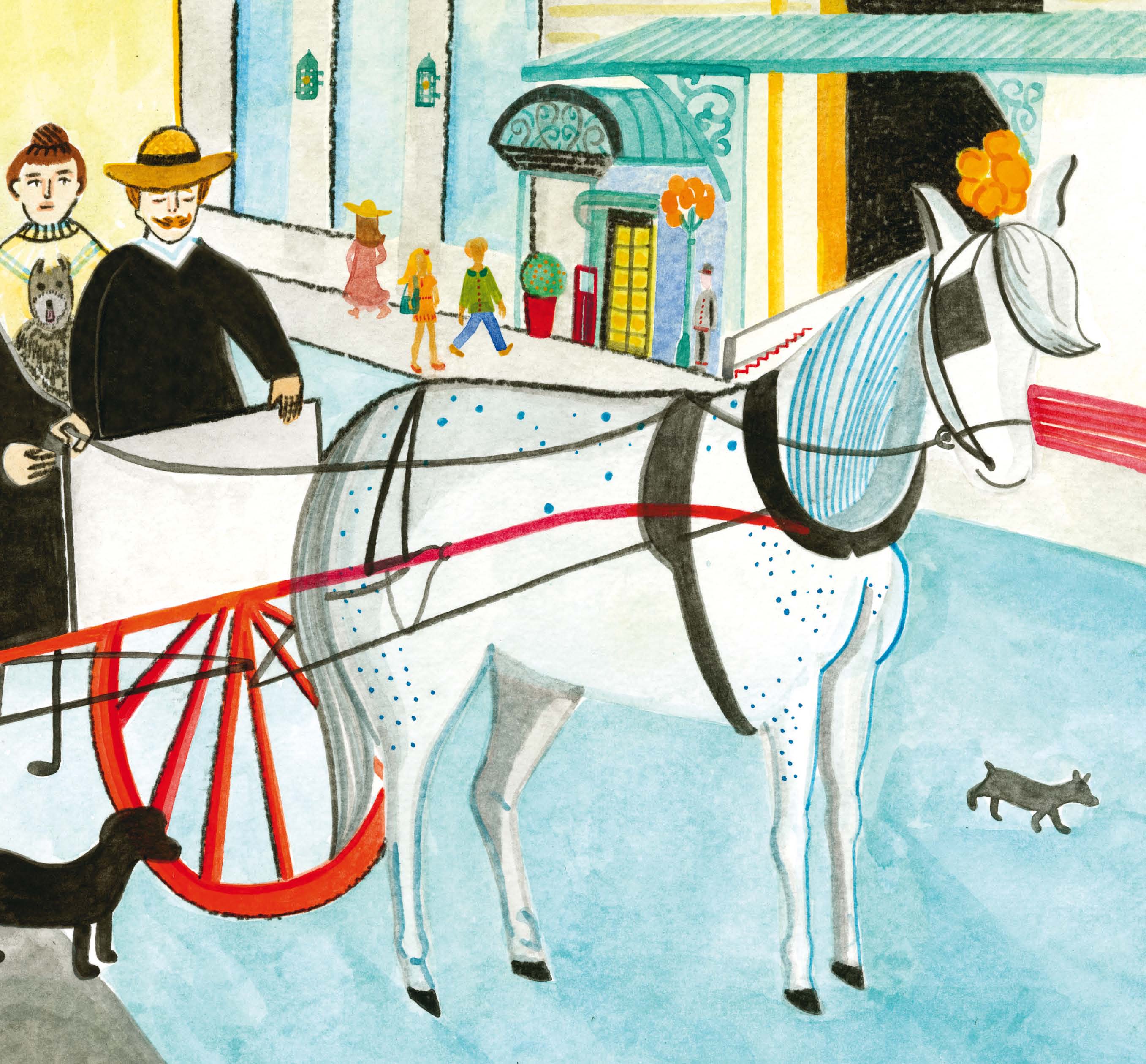
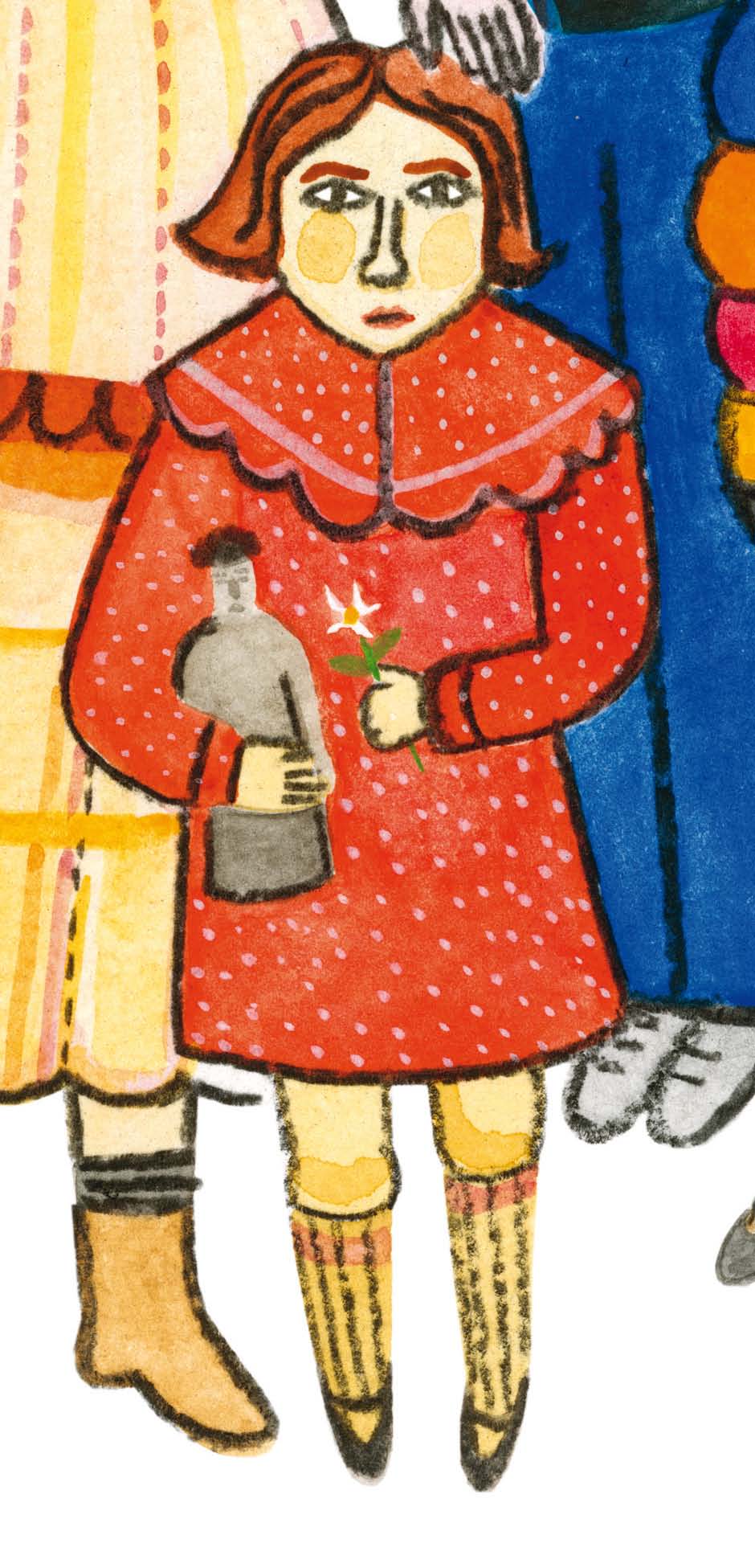
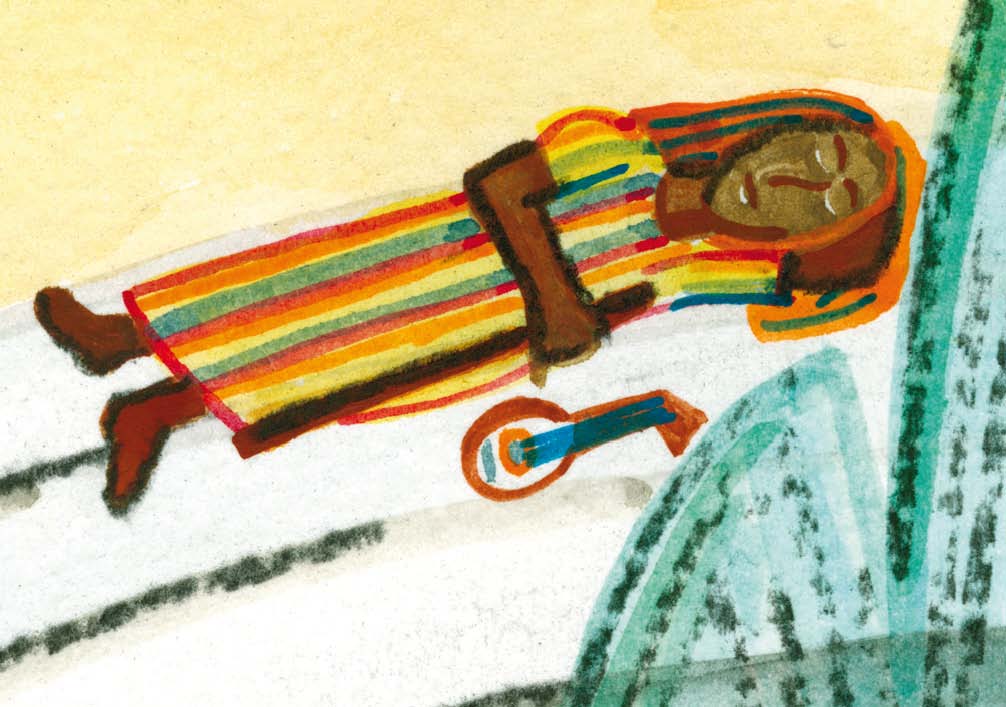
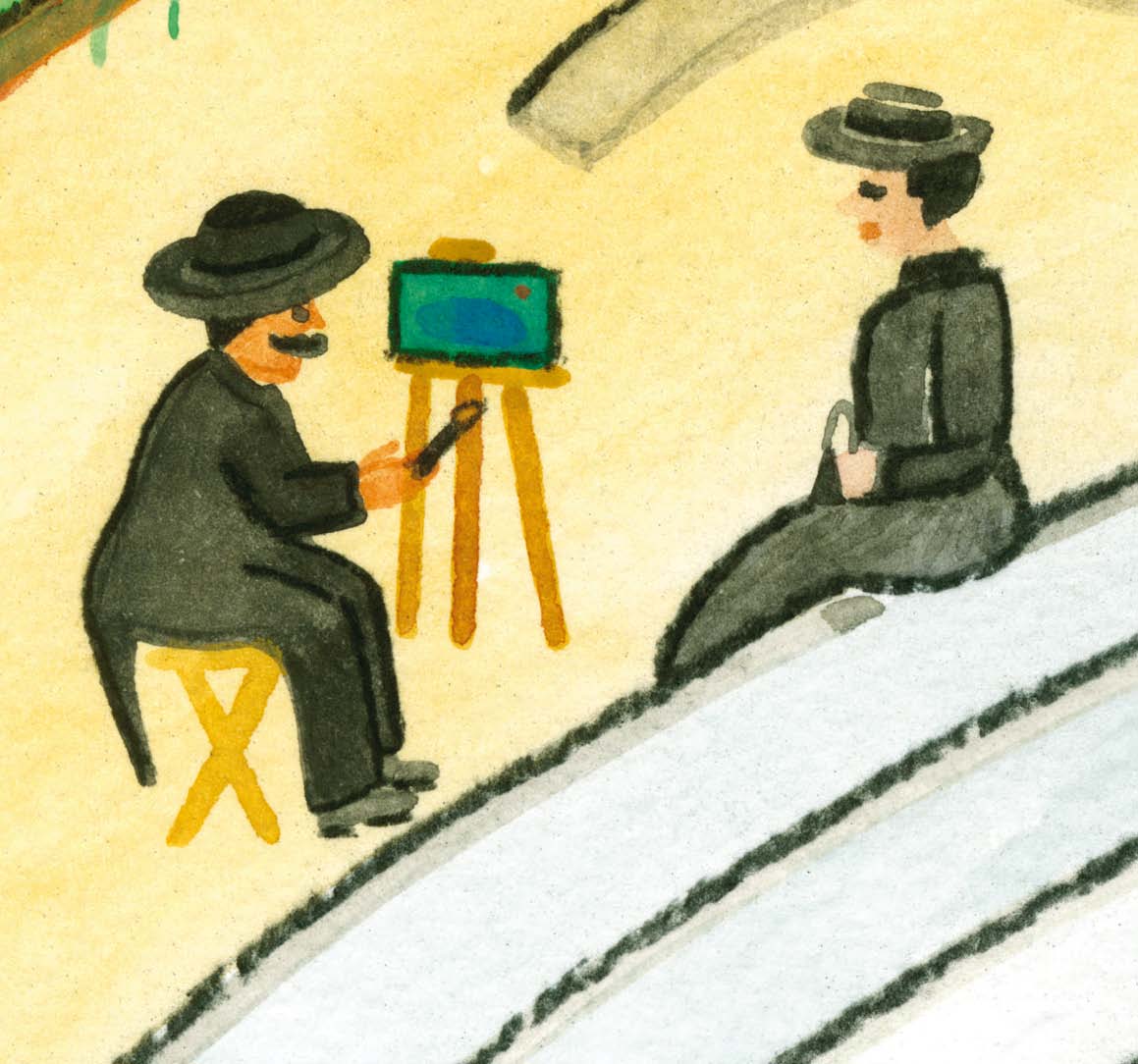
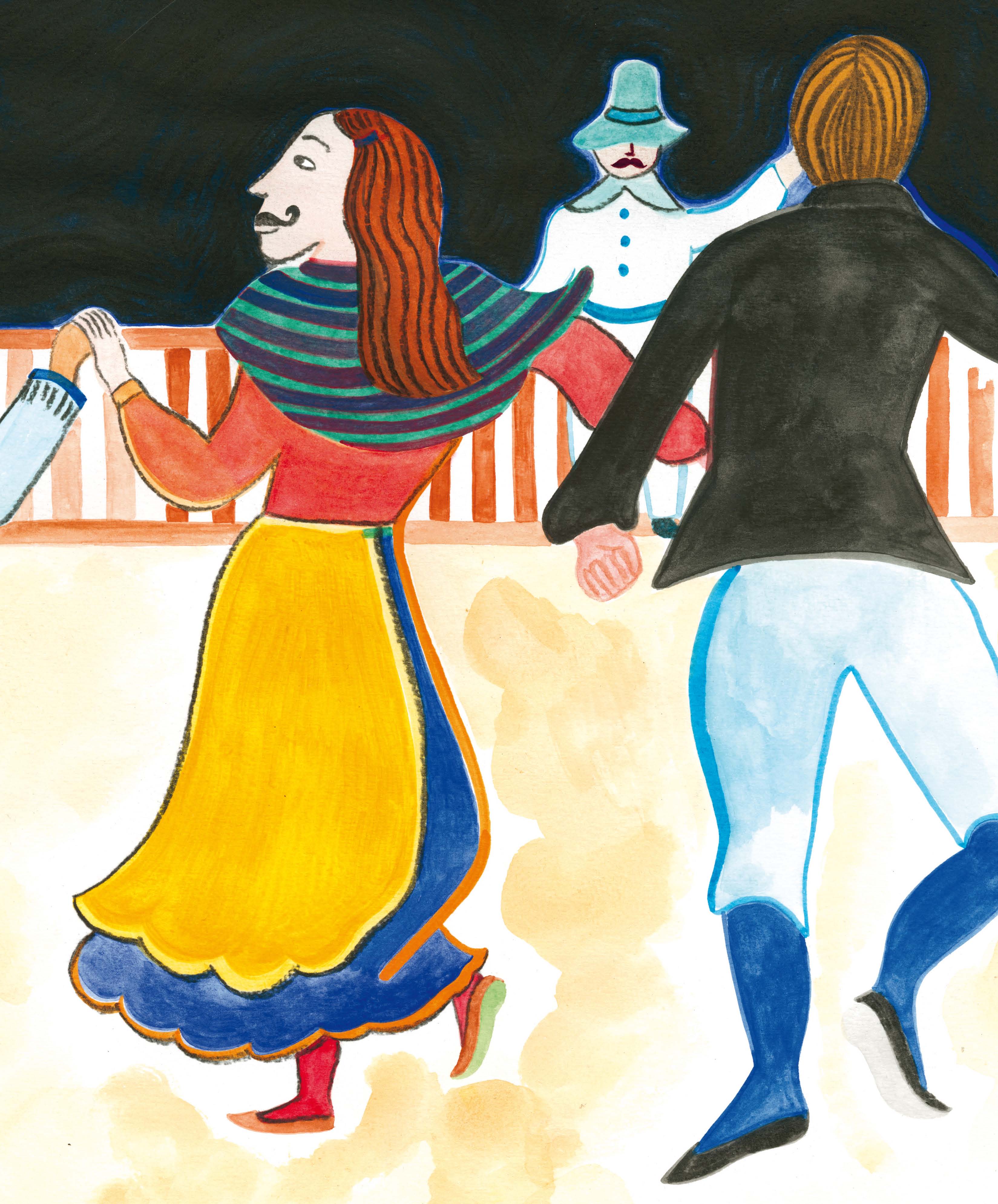
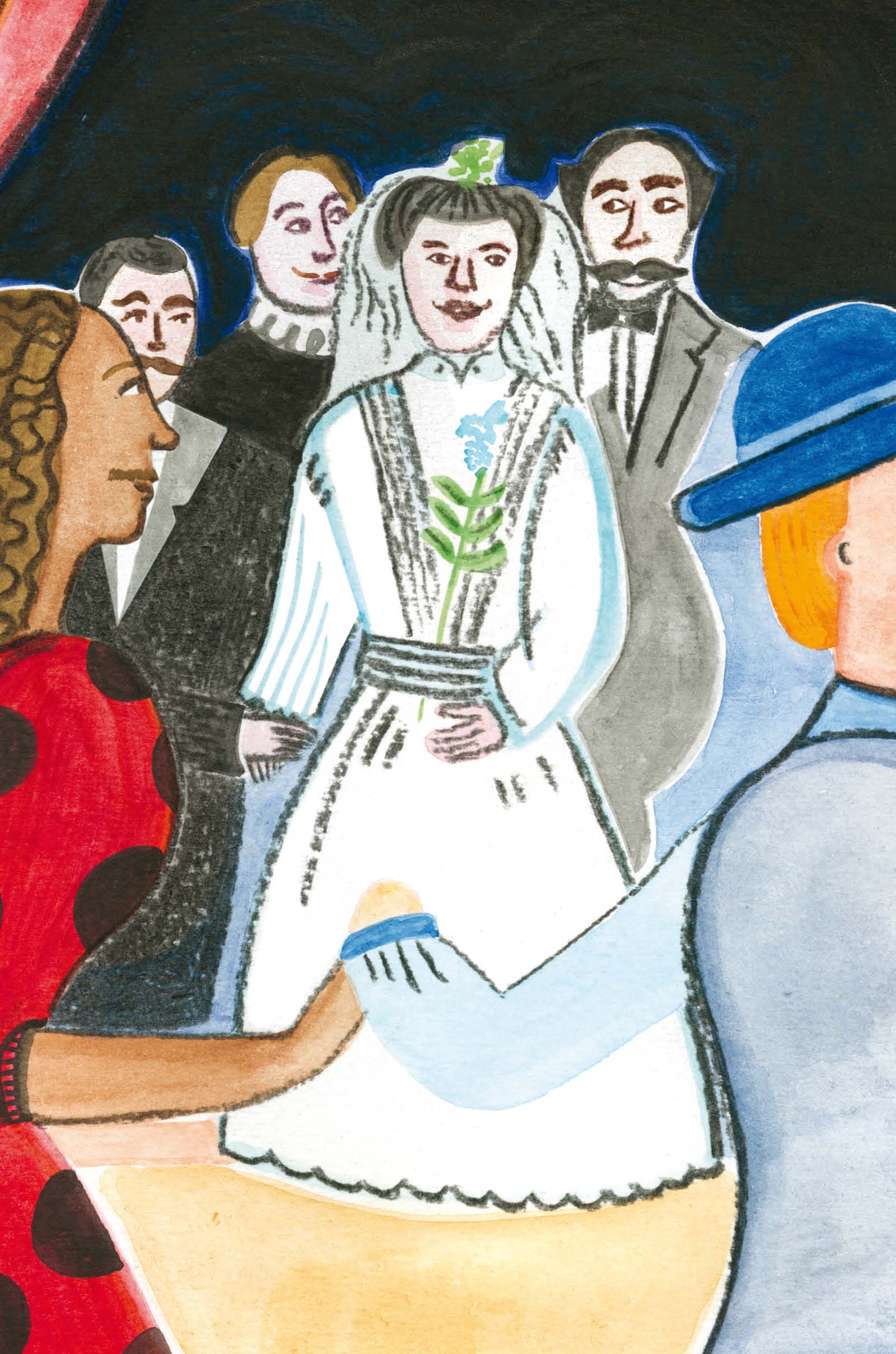
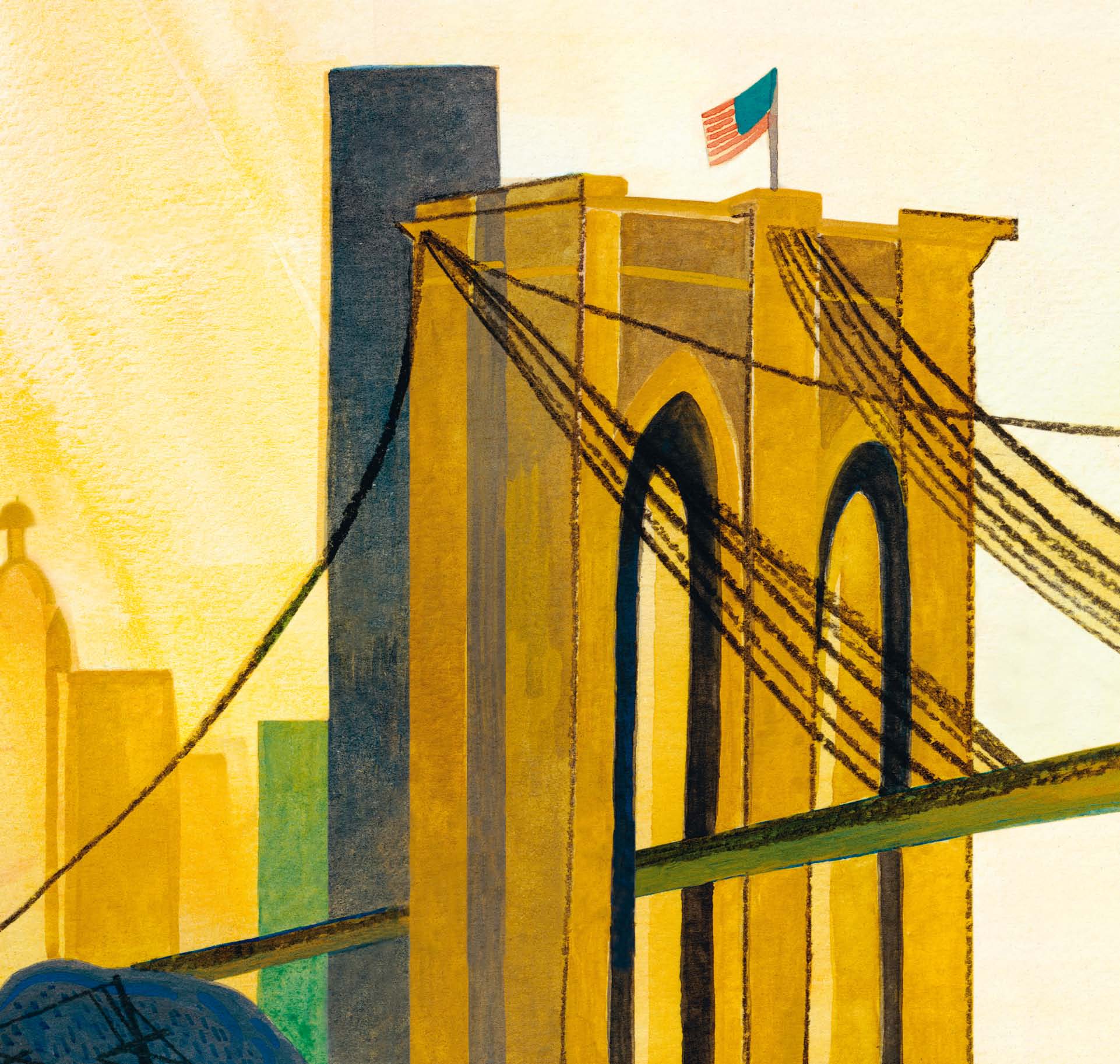
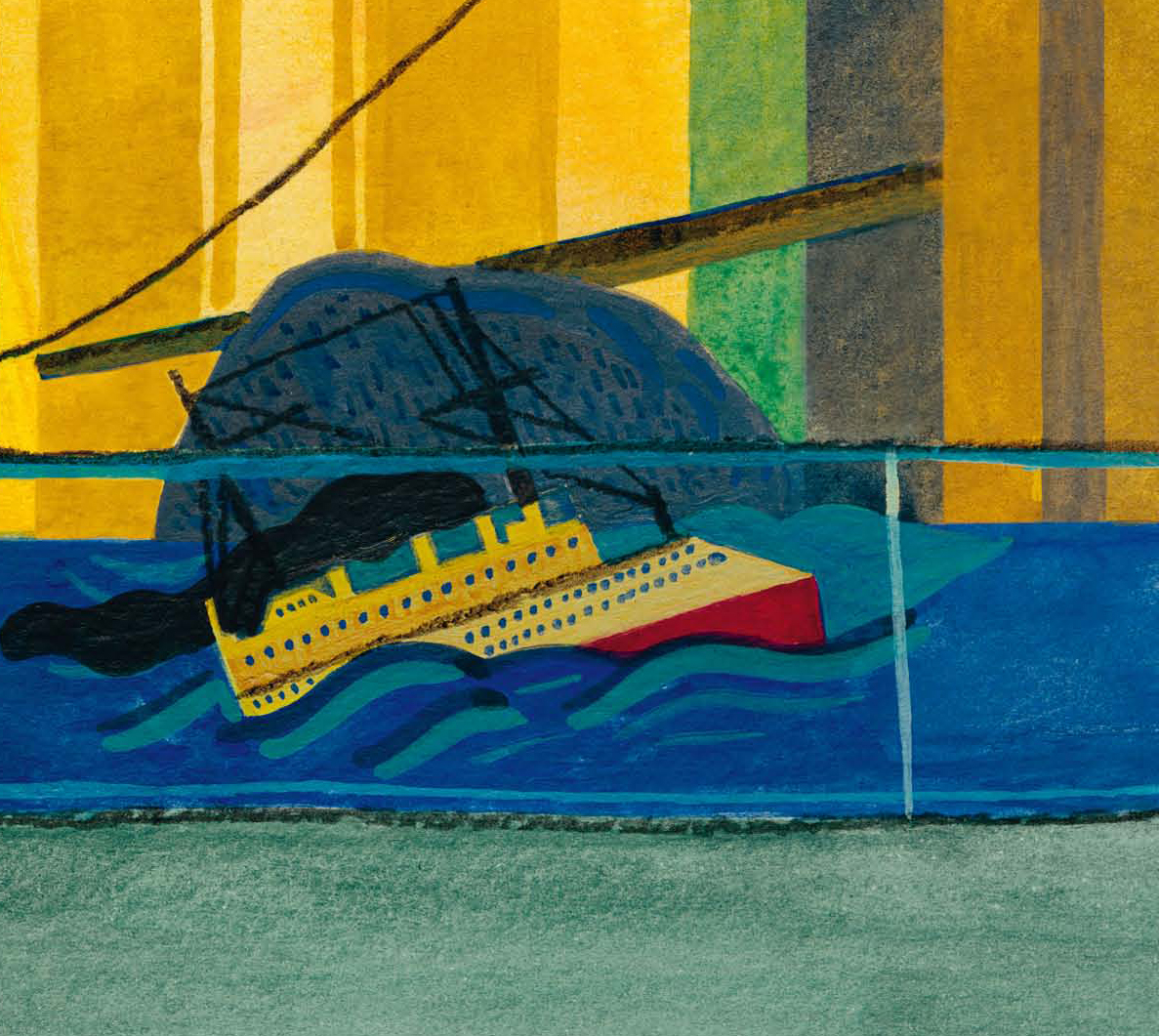
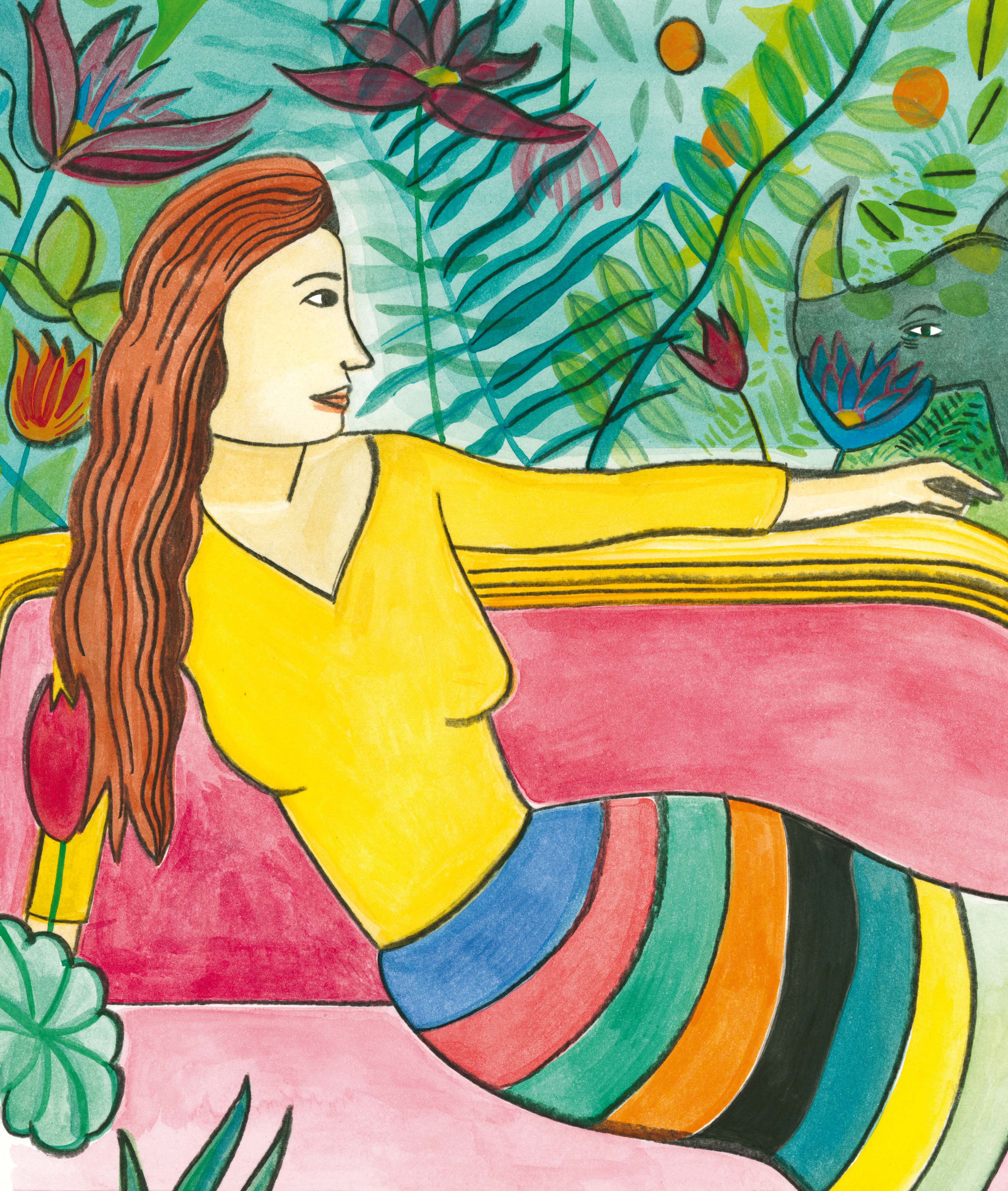
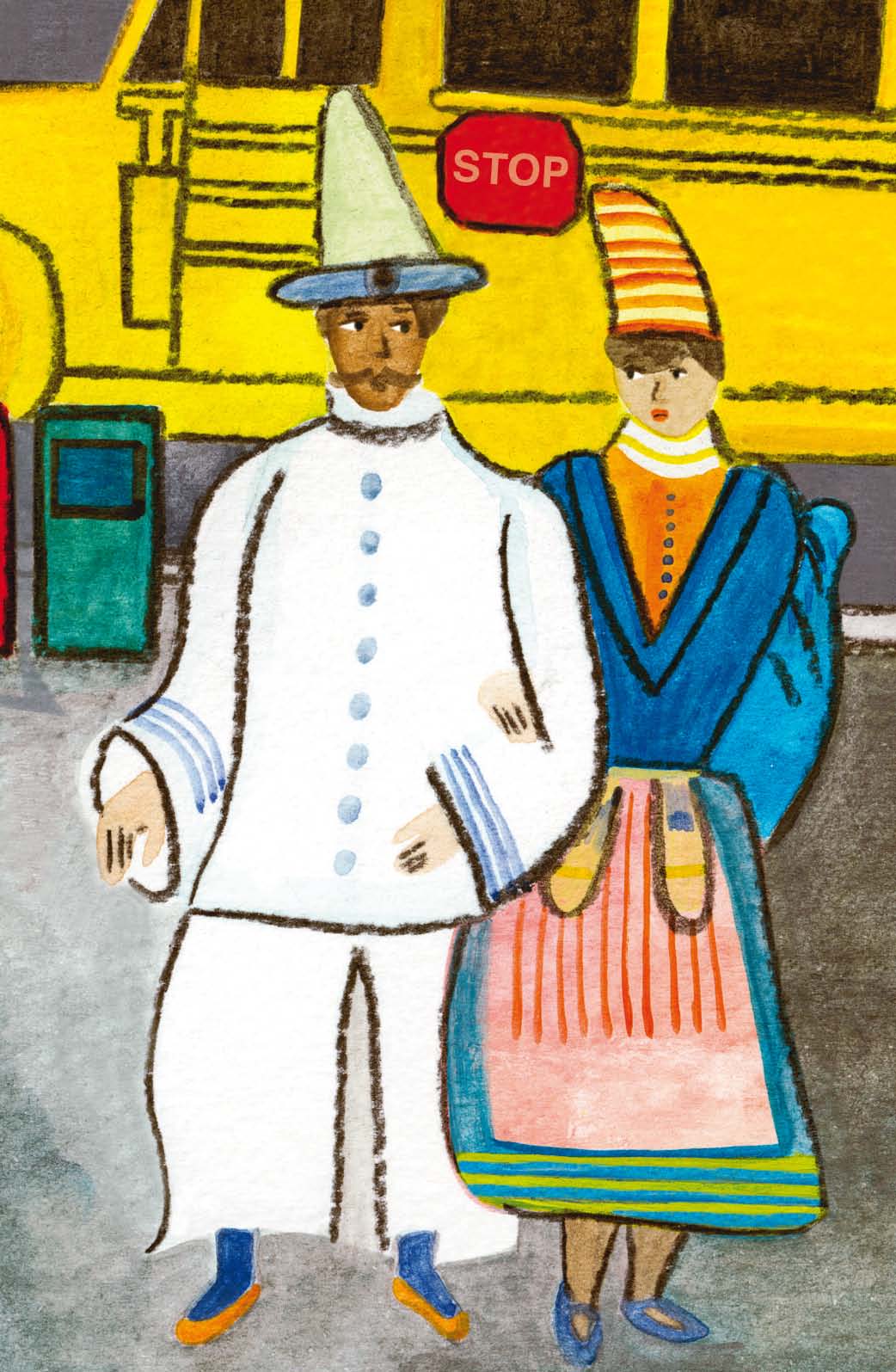
New-York, eclectic city, electric city
Electric, eclectic, the city astounds the visitor with its waves and vibrations. The noise, colours, speed and diversity characterise this iconic city of the 20th Century. The concentration of all that is the world, gives this city the look of modern-day Babylon. But what makes you return to New-York, despite the hubbub, the swarming and sometimes violent appearance, is the energy that it emanates. It is this electric energy that has attracted artists of all disciplines, from jazz to photography, through to dance, theatre and of course painting. The city's multiple facets cannot be identified through a single glance.
From the Jardin des plantes in Paris to Central Park, Henri Rousseau painted the Statue of Liberty. Not the one in New York, but the one standing on the Pont de Grenelle in Paris, subject of one of his paintings. If he had painted this city, perhaps he would have chosen its grand Central Park. These environments are both organised feats of skill and of man's imagination, and at the same time wild and threatening. On the other hand, the cries of exotic animals can be heard in these two places. A zoo is home to elephants, monkeys, birds and wild cats, right in Central Park.
The football player escapes from his picture and only has to cross Fifth Avenue to find himself amongst this nature, surrounded by the city.
A rumbling underground
The main character of the story is going the meet the city's inhabitants, in particular the curious "Monsieur à la montre". He forms part of a set of frescos and mosaics made by Jane Dickson for the Time Square metro station. The notion of time is important in New York and this man symbolises everybody's race to catch it up. (http://janedickson.com/public-projects-/mta)
High-angle and low-angle views, the city and its panoramas.
From which vantage point is the city most revealing of itself? New York has no shortage of breathtaking panoramas, but it is from the Empire State building platform that it offers the best to the visitor, embracing in a single glance all its contours. From this promontory, life below resembles a real swarm of activity. The comings and goings of cars, like miniature toys, people, like lines of insects making rapid movements, present an ongoing spectacle. In the story, John suddenly becomes dizzy, wanting to regain firm ground, as if the advance up the high towers to reach the sky was frightening him. After the under world and the plunging view over Manhattan Island, he makes his way, accompanied by a new friend, towards one of the most iconic districts of the city: Chinatown.
Chinatown is located in south of New York. This district encompasses several neighbourhood blocks. Its inhabitants carry on their culture and their traditions. Plunging into these alleyways makes you forget which continent you are on. Chinatown is one of the Big Apple's many large districts.
The night and its night owls
Jane Dickson titles her work appearing in the subway, The Revellers (les noceurs). They wait for the stroke of midnight on New Year's Eve. How can you talk about New York without mentioning its intense and diverse nightlife? One of the landmarks of New York's art scene and bohemian life was Washington Square Park in Greenwich Village. Musicians and painters could be found in the numerous bars and music venues. The park still attracts street acrobats and musicians. Even a grand piano occupies one of the paths leading to the central fountain. The atmosphere is more festive in this part of the city, where the pace is not as erratic. John makes a stop there, before rejoining the Provençal dance of the improbable "Club des moustachus." (Moustache Club)
Personal photographs
